Visiting Rijeka in Winter? Here’s What to See, for Free
The Rijeka Winter Pass grants free admission to a number of city’s attractions to all visitors staying in Rijeka for more than two days in the winter months. Check out our detailed overview of all the attractions included in the offer and enjoy exploring ‘the city that flows’
TCN recently reported that the Rijeka Tourist Board launched a Winter Pass, a special promotion that includes free admission to a dozen attractions in the city.
Anyone who books accommodation in Rijeka (min. 2 nights) before March 31st 2022 will be sent a QR code upon arrival. The code provides free entrance to several museums and other popular attractions in Rijeka - more info here.
It’s a great offer, reflecting just how much there is to see in the charming port city in the offseason. Considering booking a trip to Rijeka? We prepared a detailed overview of all the attractions included in the Winter Pass, grouped by location for your convenience.

Starting downtown across the street from the main railway station, we’ll first head to the former industrial compound that’s well on its way to transforming into a lively cultural district.
The Rikard Benčić complex consists of several buildings that used to house some of the most prolific manufacturing plants in the city, such as the sugar refinery, the tobacco factory and the factory of engines and tractors. After they’d all closed down, the location was neglected for decades until a massive reconstruction project kicked off a few years ago.
The new art quarter will consist of two museums, the city library and a children’s house. We’ll start our tour with two cultural hotspots included in the Winter Pass that have already moved into their new homes.
City Museum of Rijeka: The Sugar Palace
If your stay in Rijeka only allows for one museum visit, make it this one - and not just because of the appealing name.
Housed in the seat of the former sugar refinery, the new permanent exhibit of the City Museum of Rijeka was introduced in 2020 and has already won over the locals and tourists alike.

The city’s history is laid out chronologically and in themed sections covering various facets of life in Rijeka through the ages. Highly interactive and never boring, the collection offers insight into the local culture and presents historical events in a captivating way.
You’ll see why the museum refers to the exhibit as a ‘playful time machine’; each room is a little world of its own. Groundbreaking inventions, touching stories of emigration, political turmoil, inception of advertising, local cuisine, music legends… There’s always more to discover around the next corner of the gorgeous historical palace.

Kids will love it too - there are games, quizzes, music booths and other interactive content scattered around the exhibit.
Working hours: Tuesday to Sunday, 11am to 6pm
Address: Krešimirova 28
Website: City Museum of Rijeka
Museum of Modern and Contemporary Art
Wandering around a city for the first time, some locations can be hard to find. Not the Museum of Modern and Contemporary Art - just look for the brightest, loudest, reddest facade in town.
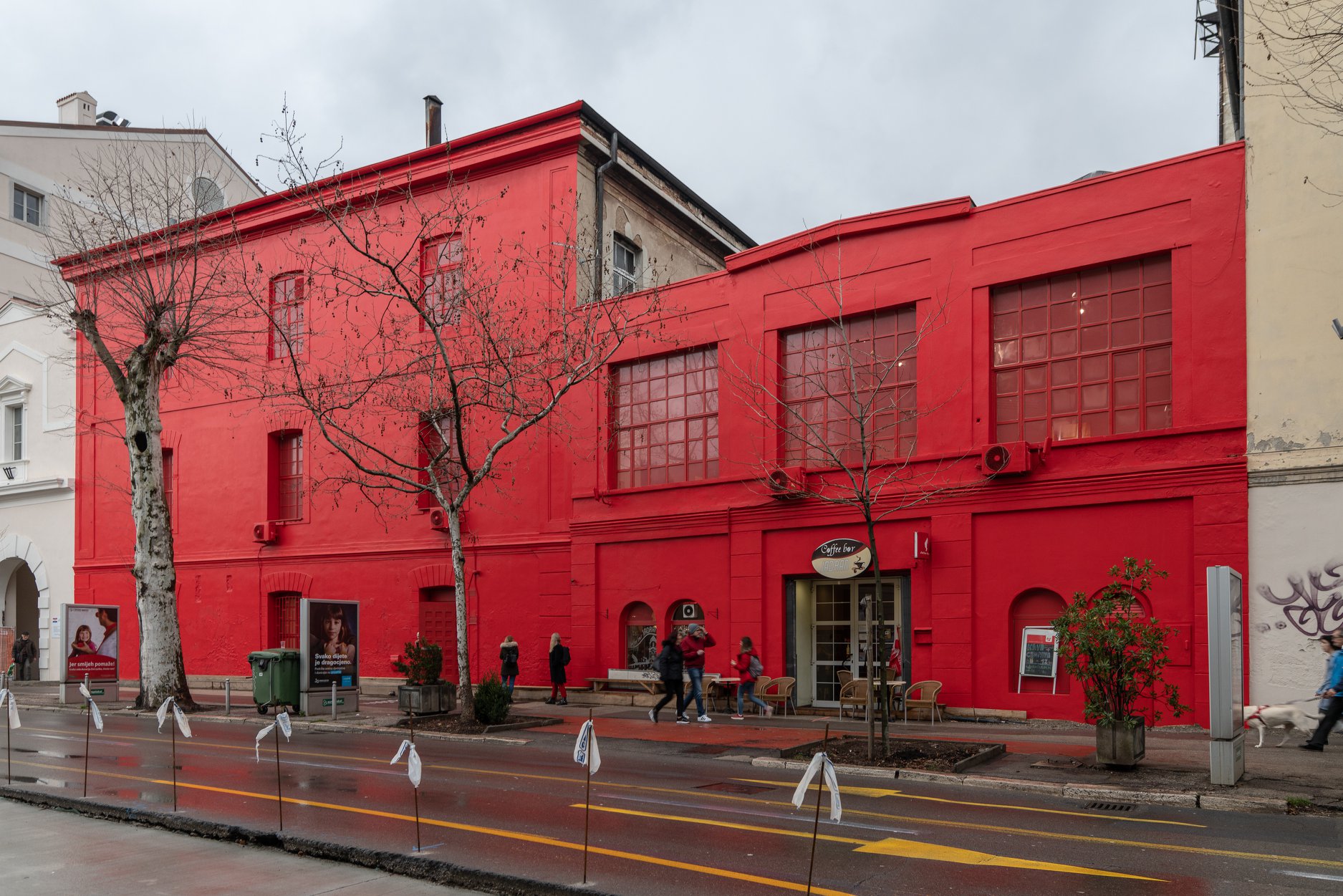
The red facade is a work of artist Dora Budor named Red Monochrome (There’s something terrible about reality and I don’t know what it is. No one will tell me.). Photo: PJ Rountree, source: MMSU
Having changed location several times since its inception, Rijeka’s Museum of Modern and Contemporary Art finally found a home it deserves in the newly restored H-building at the former industrial compound Rikard Benčić.
The new environment grew organically: the museum adopted a philosophy named ‘we need it - we do it’, presented as part of the Croatian pavilion at the 2016 Venice Biennial of Architecture. Essentially, the MMCA moved to its new home as soon as conditions allowed it once the basic renovation works were completed.
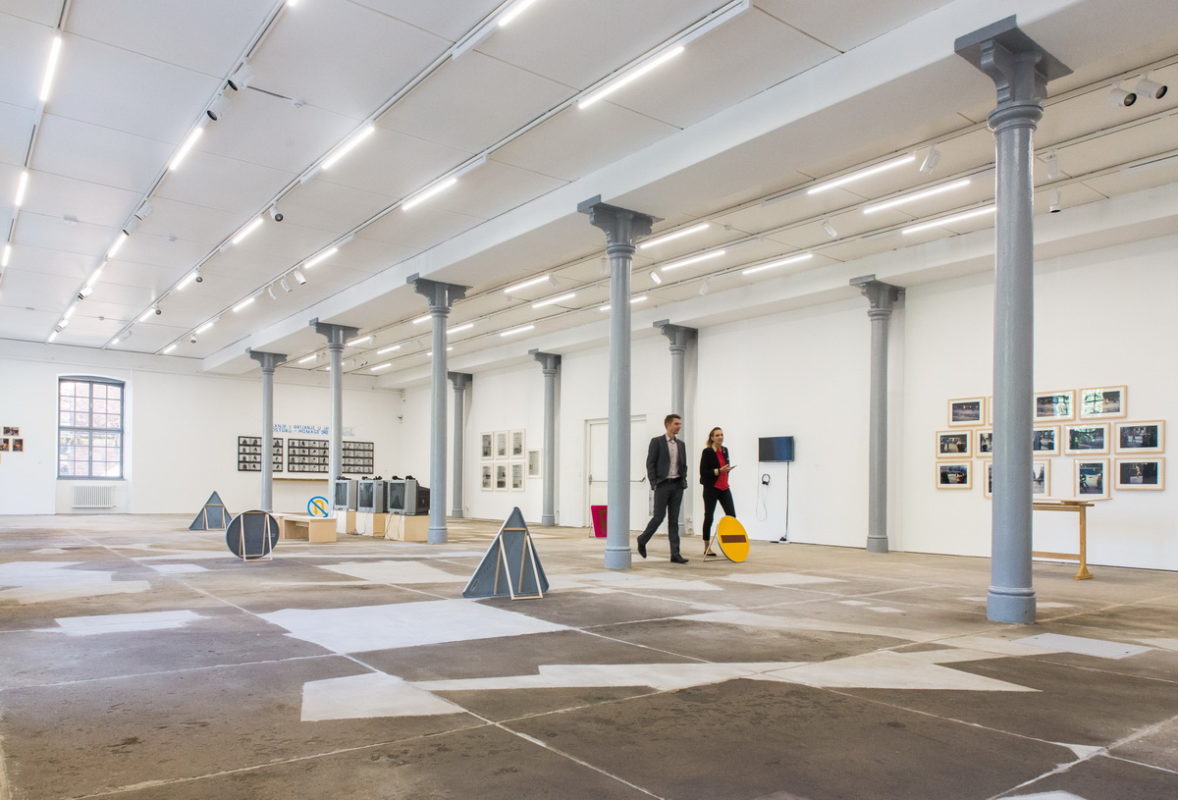
© City of Rijeka (rijeka.hr)
From that point on, the museum and its home have been developing gradually and attuned to the needs of the community. MMCA is equally dedicated to celebrating champions of modernism and showcasing the work of up-and-coming contemporary artists.
What’s on at the moment? Don’t miss the video retrospective of Sanja Iveković, titled Make Up - Make Down after one of her famous works. Iveković has had a prolific artistic career mostly focusing on photography, video and performance, and she’s also the first Croatian female artist to get a retrospective at New York’s MoMA.
Working hours: Tue – Fri: 12 am – 7 pm, Sat – Sun: 12 am – 5 pm
Address: Krešimirova 26c
Website: Museum of Modern and Contemporary Art
Exit the Benčić complex and head towards the main bus station for the next item on our list:
Rijeka Torpedo – First in the world
Did you know that the world’s first modern torpedo was invented in Rijeka? A unique exhibition housed in an old railroad warehouse tells the story of torpedo manufacturing in Rijeka.
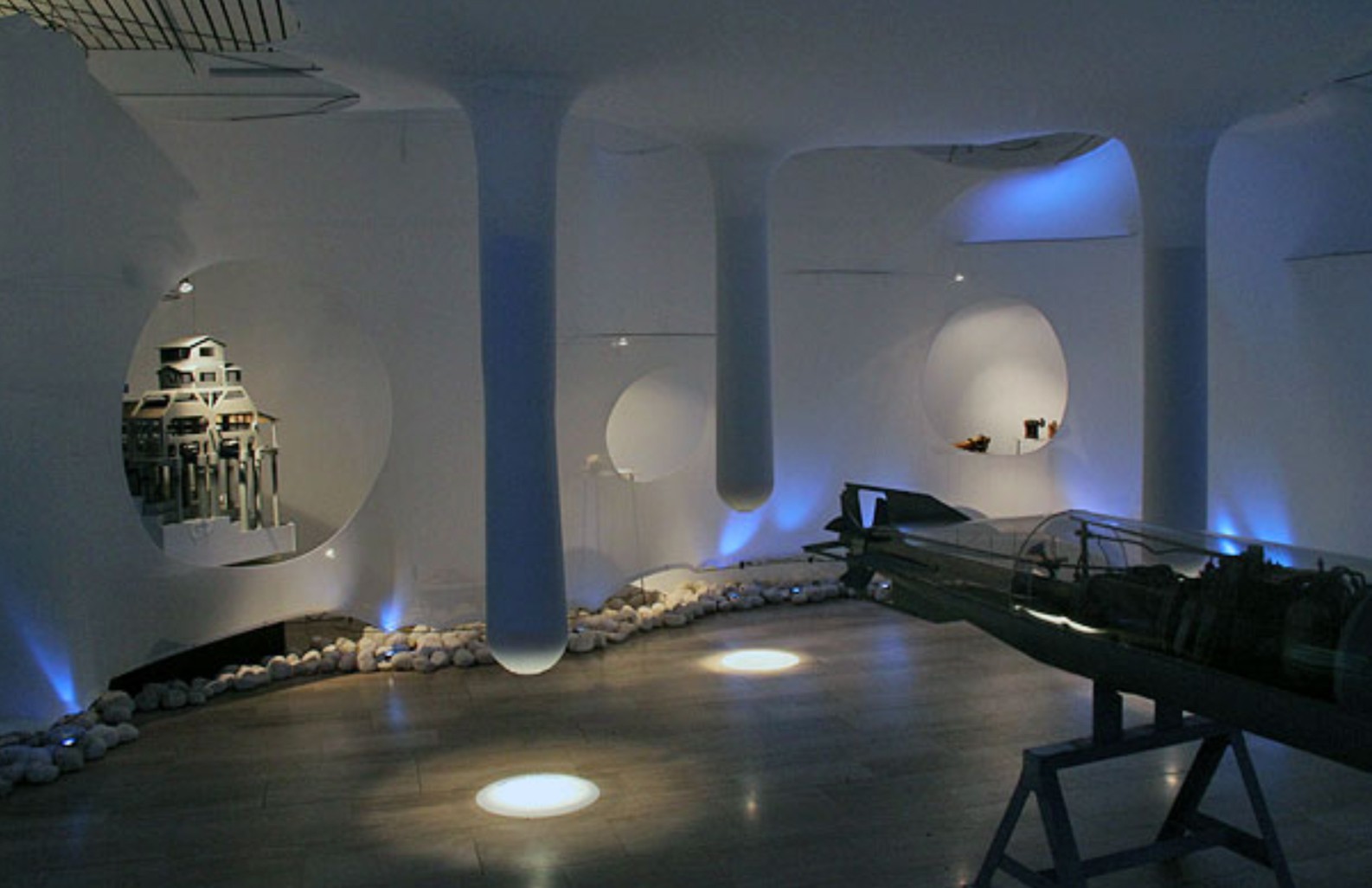
A short recap: in the 19th century, naval officer Ivan Luppis from Rijeka presented his model for an explosive floating device to Robert Whitehead, an English engineer who managed a factory in town. The design had some faults which rendered it unusable, so Whitehead built upon the original model and came up with the world’s first self-propelled torpedo.
Having secured investment from the Austrian government, Whitehead opened the first torpedo factory in Rijeka in 1870. It grew into a successful enterprise of international renown, producing up to 160 torpedoes a month by the middle of the 20th century.
Back to the exhibition… Torpedoes and related exhibits are displayed in an insanely atmospheric space, designed to evoke a sense of being underwater. Soothing audio backdrops and gentle lighting have a mesmerizing effect and make for an unforgettable learning experience - you’ll enjoy diving in.
Working hours: visit by prior arrangement only, contact +385 51 351 092 or +385 91 502 1231
Address: Žabica 4, Railroad Warehouse
Website: Torpedo of Rijeka
On to our next location, a short walk uphill from the main promenade Korzo. Several attractions included in the Winter Pass are to be found in and around the grand Governor’s Palace:
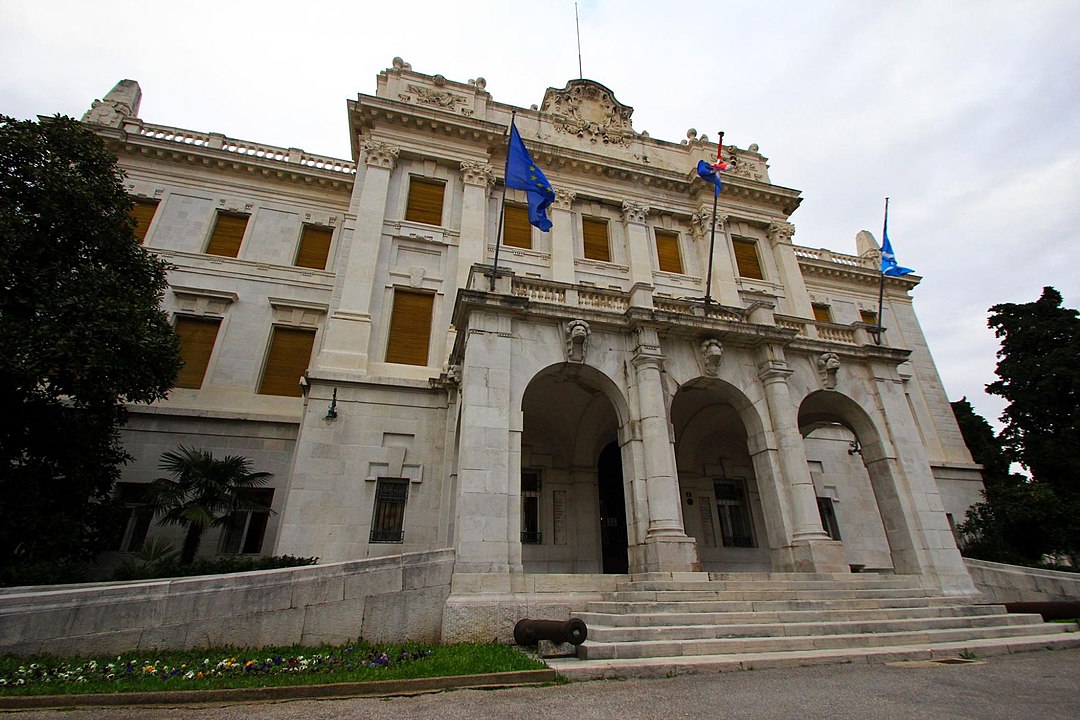
Zoran Kurelić Rabko
Maritime and History Museum of the Croatian Littoral Rijeka
What will you find behind this mouthful of a name? A lovely museum dedicated to the vast maritime heritage of the area, located in the stunning Governor’s Palace that overlooks the city center.
Their collection features one of the five remaining life jackets from the Titanic, the only preserved one in Europe - click here for a deeper look into the fascinating story.
Among all the objects and exhibits on display, the crown jewel is perhaps the building itself. A late 19th century masterpiece, the palace was built as the residence and seat of the city governor during Hungarian rule.
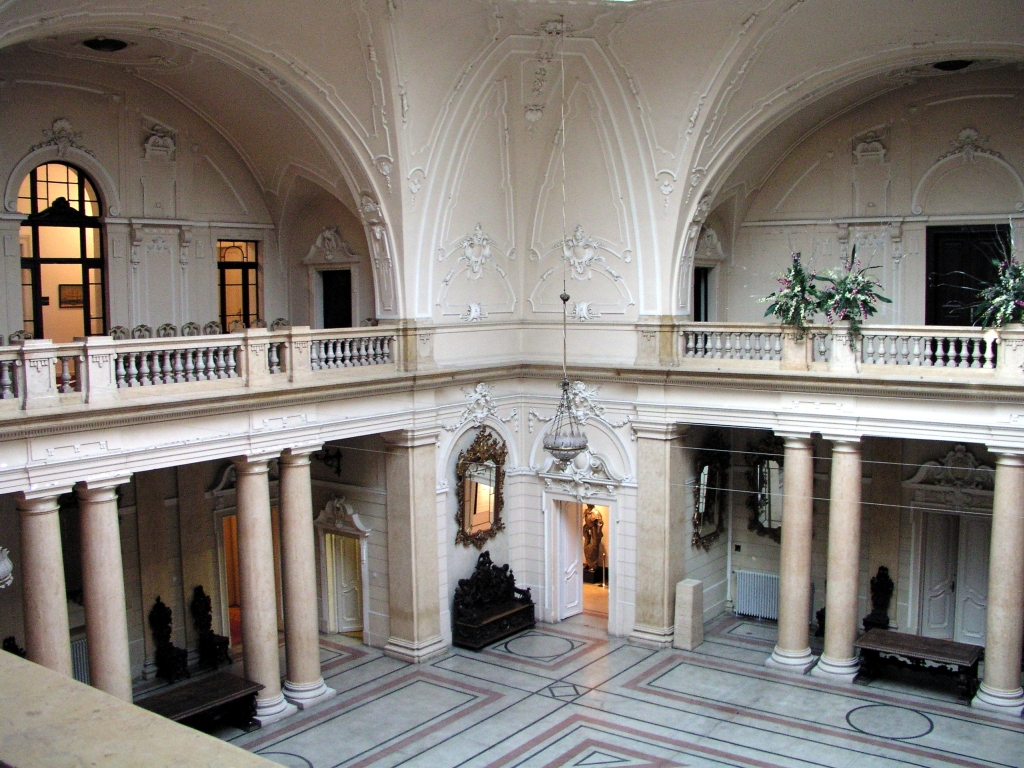
Image source: Roberta F on Wiki Commons
Designed in the neo-Renaissance style, the palace was furnished and decorated by local artisans and artists - not a common occurrence as Hungarian officials at the time typically preferred to employ their nationals on such projects.
The Governor’s Palace is alone worth a visit to the Maritime and History Museum - consider it sightseeing at its finest. Explore the collection in the many splendid salons and finish the tour with a short stroll through the garden.
Working hours: Monday 9am - 4pm, Tuesday - Saturday 9am - 8pm, Sunday 9am - 1pm
Address: Trg Riccarda Zanelle 1
Website: Maritime and History Museum
The “Cube”, Rijeka City Museum
Before the City Museum moved the bulk of its collection to the Sugar Palace, it used to be displayed at the Cube building (Kockica in Croatian).
It remains open to visitors and will continue to host temporary exhibitions related to the history of Rijeka. Aside from an occasional exhibition, there’s not much to see at the museum itself these days, but it’s worth checking out for the architecture that stands out against the historical backdrop of the city center.
Purposely built in the 1970s to house the museum and designed by Croatian architect Neven Šegvić, the Cube is known as one of the most notable works of modern architecture in Rijeka.
The museum is located to the left of the Governor’s Palace.
Working hours: Tuesday - Friday 4pm to 7pm; Saturday 10am - 2pm
Address: Trg Riccarda Zanelle 1/1
Website: Rijeka City Museum
Natural History Museum Rijeka
Take a short walk through the park east of the Governor’s Palace and you’ll find a 19th century villa housing the Natural History Museum.
The original permanent exhibit was designed after the Naturhistorisches Museum in Vienna, albeit on a smaller scale. Today, the museum collection features some 90.000 items related to the natural history of Rijeka and the region.
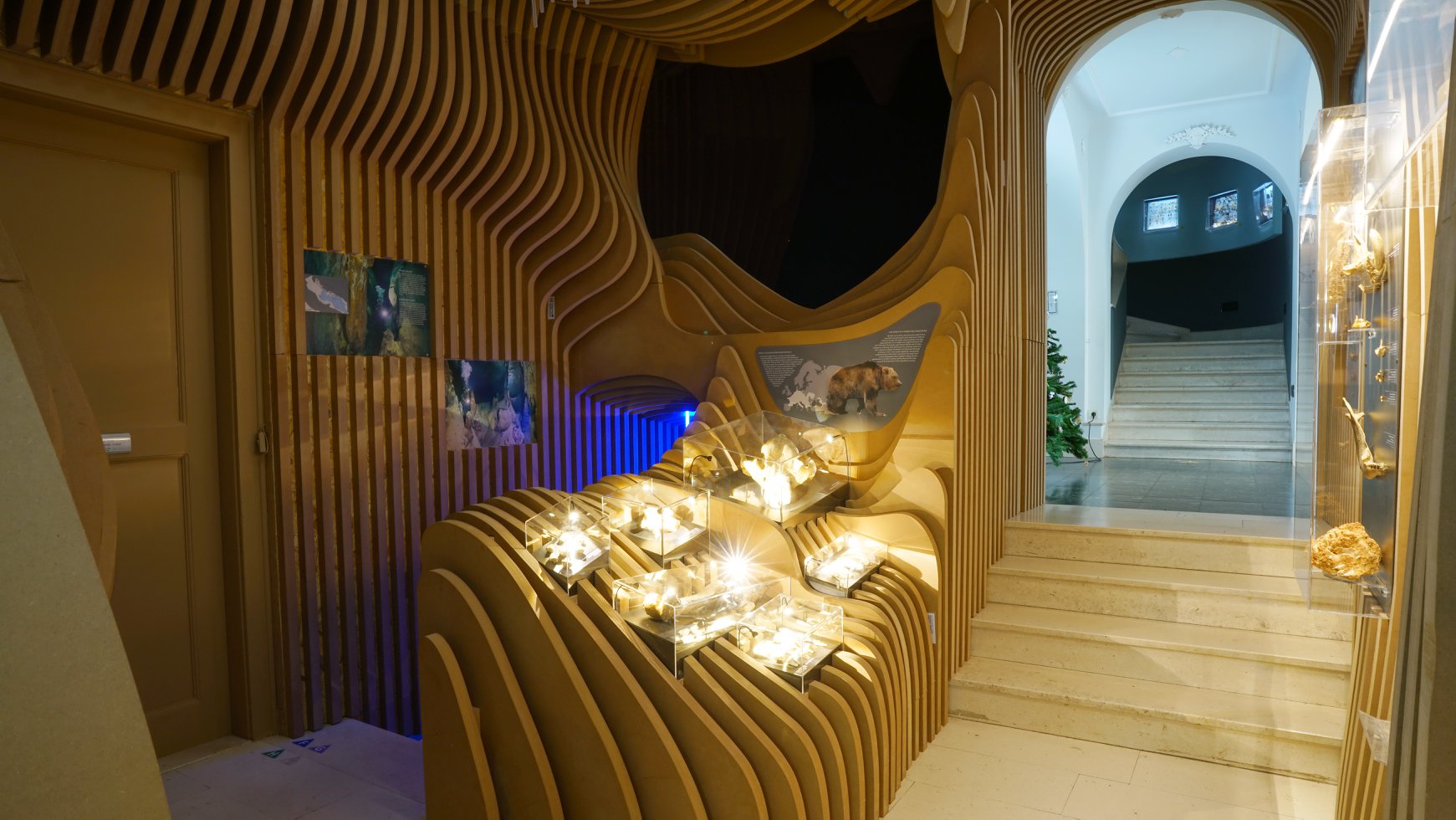
Natural History Museum Rijeka - Facebook
Numerous themed exhibits are displayed at the museum, including an aquarium, a mineral collection, a paleontology collection, and displays showcasing endemic and indigenous species from insects and reptiles to sharks.
It’s a fun place to explore and doubles as an educational visit - if you’re travelling with kids, make sure to stop by.
Working hours: Monday - Friday 9am to 8pm (break 3-4pm), Saturday and Sunday 9am to 8 pm (break 1-2pm)
Address: Lorenzov prolaz 1
The next two attractions are both located a few minutes’ walk from the Governor’s Palace.
Peek & Poke – Computer Museum
Need a change of scenery after all the regular museums? Here’s one that doubles as a time machine that everyone will love!
Peek&Poke is a display of vintage computers, gaming consoles, calculators and other bits of 20th century technology. Founded by a group of computer enthusiasts in 2007, the museum now houses a collection of more than 1000 exhibits sourced all over the world.
True to their name, they allow the visitors to poke at a good deal of displayed devices. Depending on your age, it’ll either be a trip down the memory lane or a rare opportunity to have a go at a few consoles of the past - enjoyable either way.
More fun awaits next door at the Museum of Childhood, run by the same crew as Peek&Poke. It’s a delightful display of children’s games, toys, books and other objects associated with childhood that were all used and loved in the past - the oldest exhibit dates to 1900.
The collection was built by citizens who loved the idea when the concept was first introduced and donated their old games and toys. It’s a heartwarming place that’s sure to induce some nostalgia; look around and see if anything brings back memories of the good old days.
Address: Ivana Grohovca 2
Working hours: October 15th to May 1st - Saturday 11am to 4pm. Prior arrangement is needed to visit Peek&Poke on other days of the week - contact them through this form
Website: Peek&Poke, Museum of Childhood
JGL Pharmacy Museum
Tucked away in the Old town in Rijeka is a unique destination that’s sure to spark your curiosity. Explore the hissstory of pharmacy, invites the friendly snake on the wall - the symbol of medicine and mascot of the JGL Pharmacy Museum.
The specialized museum presents the history of pharmacy on a global scale with a focus on Croatia. They’ve done a superb job with the permanent display, where VR and AR meet authentic historical exhibits such as vintage tablet-making machines and a 1909 cash register.
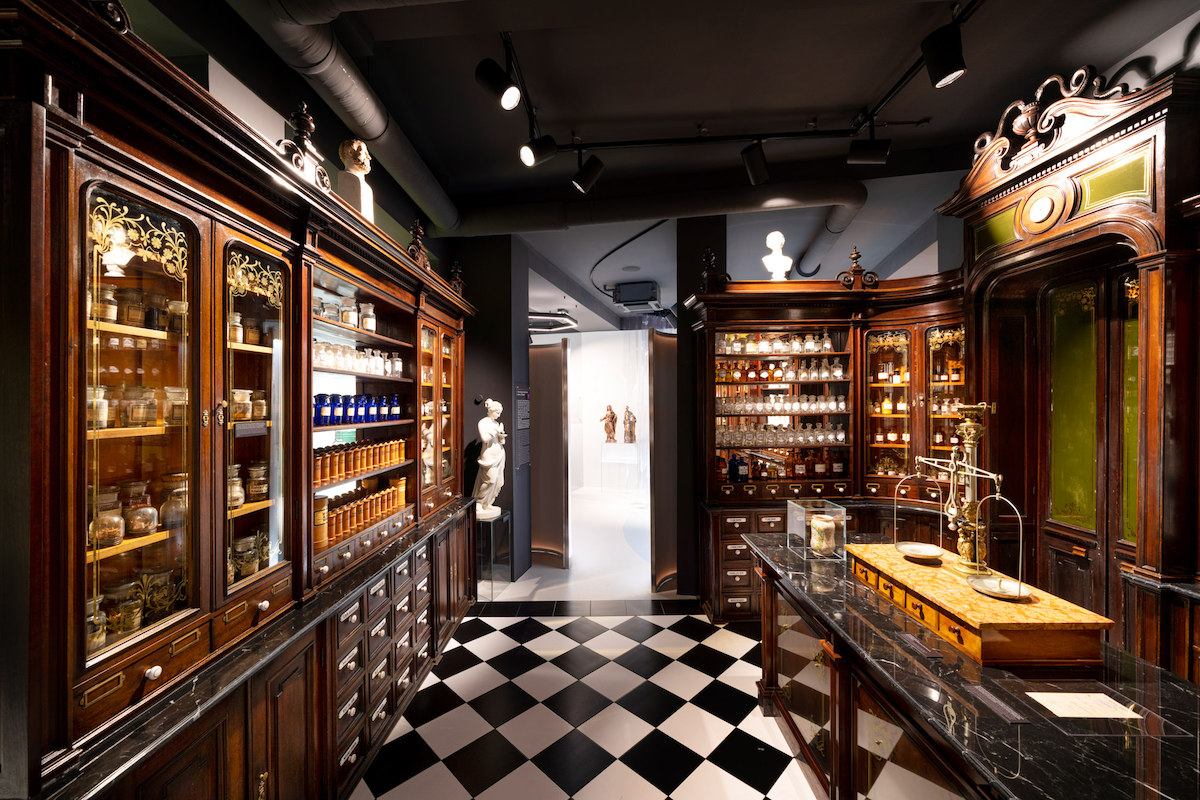
© JGL Pharmacy Museum
The star of the show? The central exhibit, an impeccably recreated front-end space of a typical pharmacy from the first half of the 20th century.
In case you’re wondering, the JGL in the name stands for Jadran-Galenski Laboratorij, a Croatian pharmaceutical giant that established the unique museum in collaboration with the Rijeka City Museum.
Working hours: Tuesday to Saturday 10am - 7pm, Sunday 10am- 2pm
Address: Užarska ulica 11
Website: JGL Pharmacy Museum
Guided tours available upon request (price: 120kn)
And finally, three notable attractions outside the city center:
Trsat Castle
Perched on a hill above the city, the Trsat Castle offers a phenomenal view over the city and the Kvarner Bay, best enjoyed with a cup of coffee or a cocktail at the courtyard café.

Romulic and Stojcic
It’s a lively location these days, currently hosting a grand Advent programme that has the castle wrapped in Christmas lights - 11 kilometres in total!
The castle had a pretty eventful history: it was built by the noble family Frankopan in the 13th century and was later owned by Venetians and the Habsburgs. The present layout is owed to Laval Nugent, an Austrian field-marshal of Irish origin who got possession of the castle in 1826.
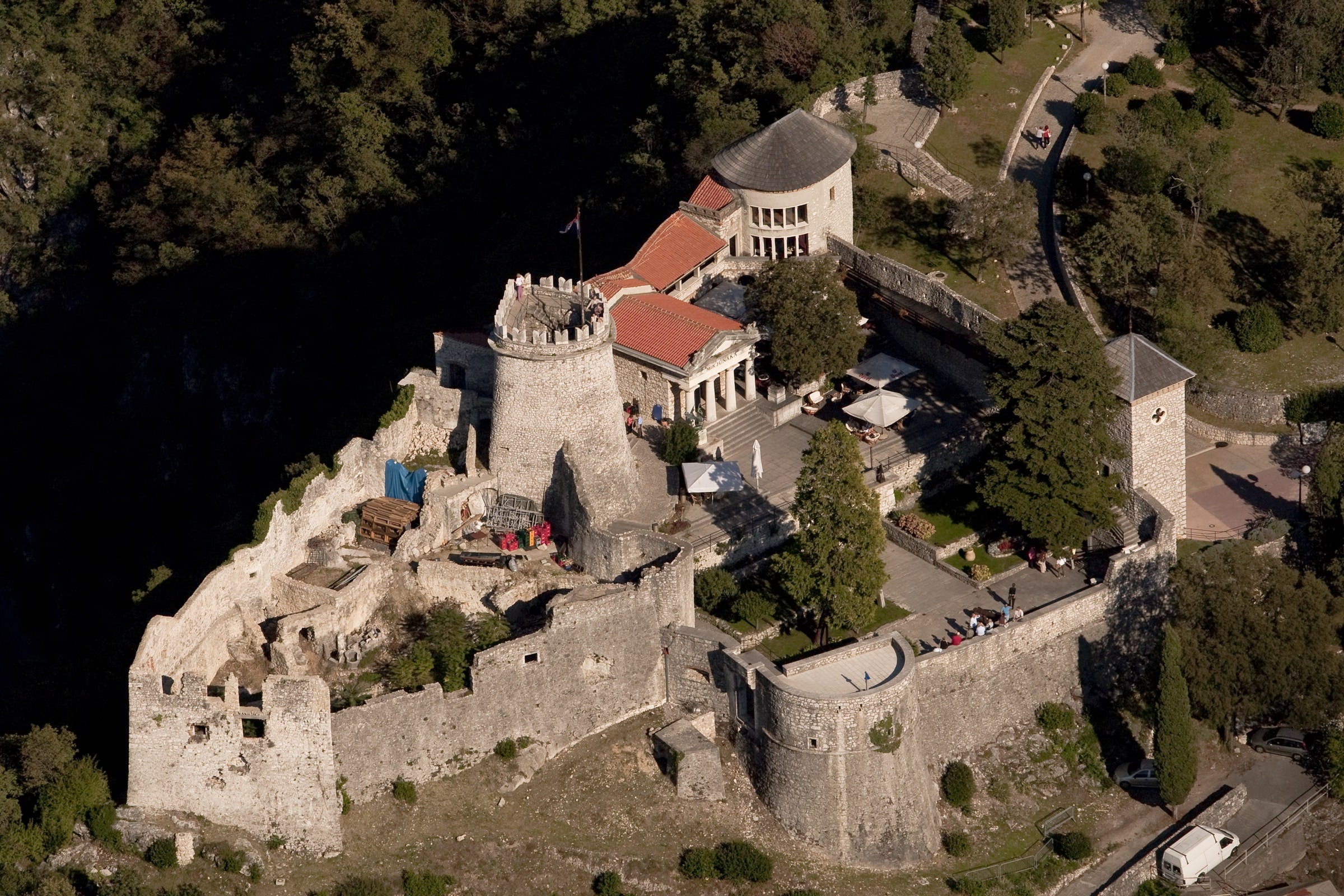
Romulic and Stojcic
Nugent restored the castle and expanded the structure with a few additions, the most notable being his family mausoleum whose entrance is guarded by two peculiar creatures - read more here.
There’s a lot to do here beyond enjoying the vistas. The castle grounds host food festivals and cultural manifestations throughout the year, with plenty of concerts and plays taking place in the summer months. The fort is also home to a sleek interpretation centre for visitors, one of the stops on The routes of the Frankopans, a cultural-tourist route you can learn more about here.
Working hours: entrance to the castle grounds 9am - 12am daily; interpretation centre for visitors: Monday to Friday 9am to 5pm, Saturday and Sunday 10am to 6pm
The Astronomical Centre
Opened in 2009, the Astronomical Centre in Rijeka is the only such facility in Croatia that has both an observatory and a planetarium.
It’s located on a hill outside the city centre, in a former fortress built during World War II. Thoroughly renovated, the centre now features the only planetarium in the region that uses digital technology.
There are several reasons to visit the Astronomical Centre. If you’re fascinated by space, you can attend one of the presentations or films about the universe, screened on the ceiling of a spherical dome:

© Astronomical Centre Rijeka
Quite a unique venue, but there’s more: the rooftop of the Astronomical Centre offers one of the best views in Rijeka any time of day, but turns absolutely spectacular at night. It’s a perfect place for evening drinks (yes, there’s a bar), with the shimmering lights of Rijeka and the Opatija riviera reflected in the Kvarner bay.
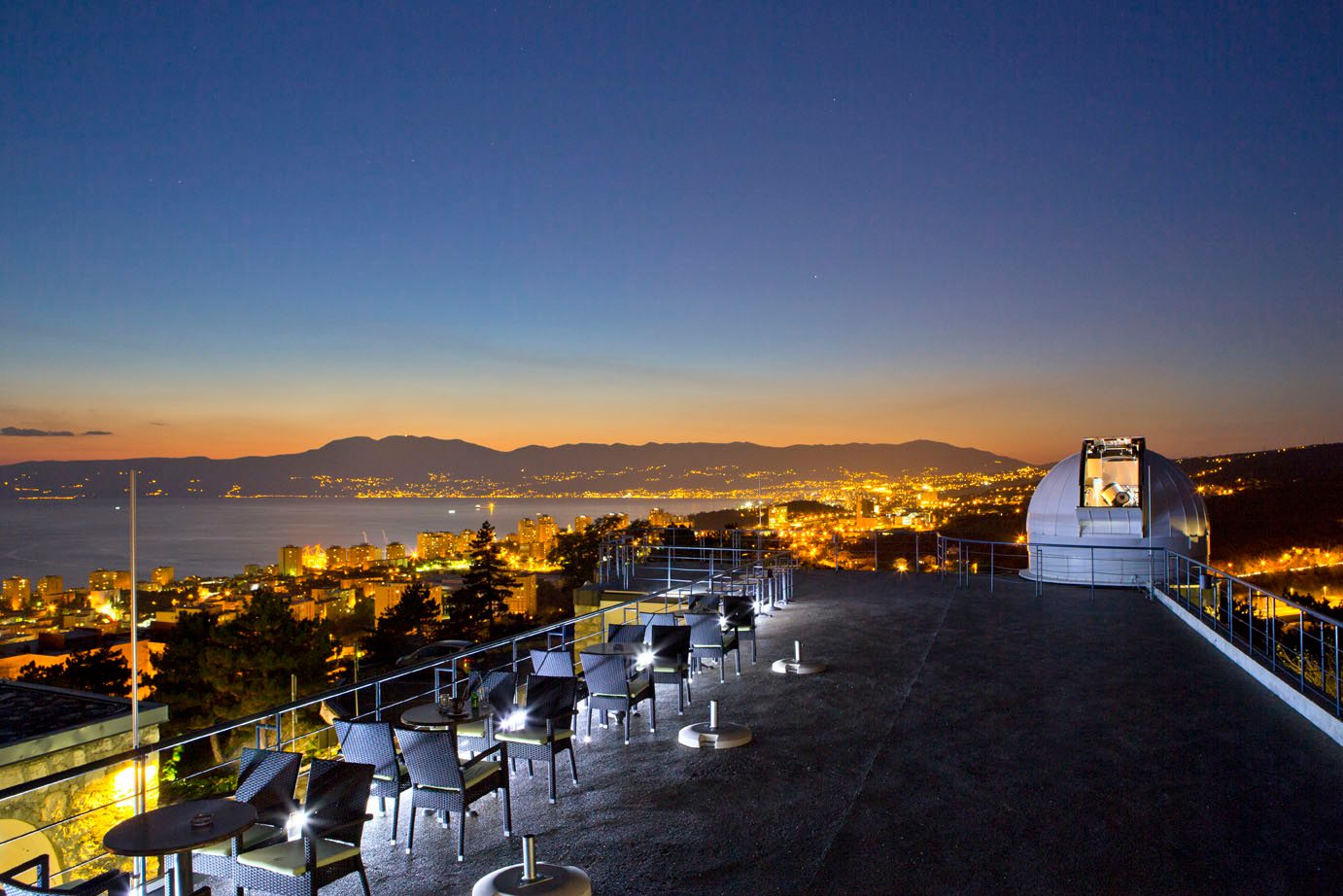
© Astronomical Centre Rijeka
The facilities of the Astronomical Centre are wheelchair accessible.
Working hours: Tuesday - Saturday 8am to 10pm
Address: Sveti križ 33
Website/event schedule: Astronomical Centre Rijeka
Swimming Pools Kantrida
How about a few laps in the pool for a change of pace after all the sightseeing? Fans of active vacations can use their Rijeka Winter Pass to avail of free use of swimming pools in the city neighbourhood Kantrida.
The Kantrida swimming pool complex consists of five pools: indoor and outdoor Olympic pools, a 25m pool, a children’s pool and a diving pool. The facilities meet the standards of largest water sports competitions and are entirely wheelchair accessible.
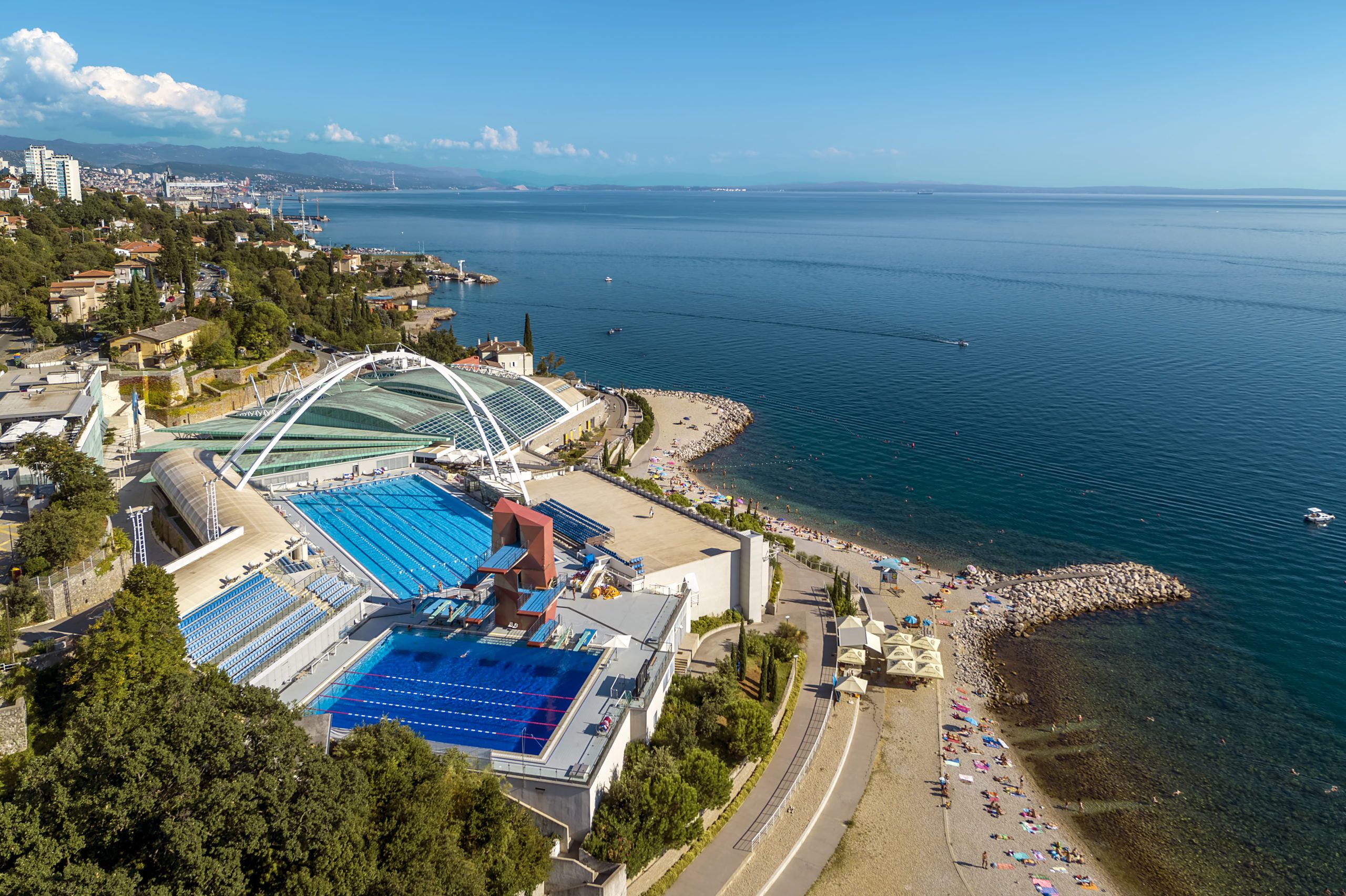 © Visit Rijeka (visitrijeka.hr)
© Visit Rijeka (visitrijeka.hr)
Added bonus: the sports complex is situated right above the beach. We don’t expect many enthusiasts wanting to take a dip in winter months, but it’s a lovely spot to have a coffee with a view or take a short walk by the sea.
Working hours: Mon, Tue, Wed and Fri 7am to 10pm, Thu 9am to 10pm, Sat 7am to 4pm, Sun 8am to 3pm
Address: Podkoludricu 2
Check out the timetable to see when the pools are open to the public.
Croatian Cup Semifinal Draw: Osijek, Rijeka, Gorica, and Hajduk Learn Opponents
December 6, 2021 - The Croatian Cup semifinal draw was held at the Croatian Football Federation headquarters on Monday.
In the Croatian Football Cup semifinals, Rijeka will play against Osijek at Rujevica Stadium and Hajduk will face Gorica at Poljud, according to the draw held on Monday in Zagreb.
The semifinal matches will be played on March 1 and 2, 2022. There were no top seeds in the draw and the semifinals will be played in one match.
The Cup final will be played on May 22 next year at Poljud Stadium in Split.
This is a great opportunity for Hajduk, which has played 19 consecutive Cup games away. Hajduk last won the Cup in 2013, which is also the last trophy for the Split club. Hajduk has the chance to play two home games in the Cup and a historic opportunity for their first trophy in eight years. The last time Split hosted the Cup was in March 2016 in the semifinal match against Dinamo.
The Rijeka and Osijek match will certainly be a bit more competitive, though Rijeka will have the home pitch advantage.
Split will be the seventh different host of the final match for the Croatian Cup since the decision was made in 2016 that only one match will decide the winner of this trophy. The hosts of the previous six finals were Osijek, Varaždin, Vinkovci, Pula, Šibenik, and Velika Gorica.
Recall, in the quarterfinal matches which were played on Tuesday and Wednesday last week, Gorica topped Istra on penalties, Hajduk beat Lokomotiva 6:3, and Osijek beat Belupo on penalties. In the last quarterfinal, Rijeka knocked out Dinamo 3:1, which forced the resignation of Dinamo coach Damir Krznar.
The sports betting company SuperSport became the title sponsor of the Croatian Football Cup this year. The most massive football competition thus bears the name SuperSport Croatian Football Cup for the 2021/22 season.
To read more about sport in Croatia, follow TCN’s dedicated page.
HNL Round 18 Recap: Hajduk Tops Dinamo 2:0 in 'Eternal Derby' at Maksimir
December 6, 2021 - The 18th round of the Croatian First League was held from December 4 to 6, 2021. This round saw Hajduk win the 'Eternal Derby' against Dinamo, while Osijek and Gorica drew, and Istra and Belupo will close out the round tonight. Here is our HNL round 18 recap (so far).
Gorica v. Osijek (1:1)
Gorica and Osijek opened the 18th round on Saturday, December 4, 2021, in Velika Gorica in front of 673 fans.
Prsir scored for the Gorica lead in the 6th minute, which they maintained until the 3rd minute of stoppage time when Osijek's Hiros scored for 1:1 at the half. Kleinheisler was booked for his second yellow in the 61st minute, forcing Osijek to play with a man down for the remainder of the match.
Gorica is currently in 5th place with 26 points, while Osijek is in 2nd with 35 (and one game less).
Rijeka v. Hr. Dragovoljac (4:1)
Rijeka and Dragovoljac met at Rujevica Stadium on Saturday, December 4, 2021.
Rijeka's scoring spree started in the 16th minute when Obregon found the back of the net for 1:0. Muric increased Rijeka's lead to 2:0 in the 44th minute. Muric scored again in the 47th minute to increase Rijeka's lead to 3:0, but Petkovic gave Dragovoljac some hope with a goal in the 67th minute for 3:1. Muric secured his hattrick with his third goal in the 80th minute for the final 4:1.
Rijeka is currently in first place with 36 points (and one game less), while Dragovoljac is in last place with 7.
Lokomotiva and Sibenik (1:1)
Lokomotiva and Sibenik met in Zagreb on Sunday, December 5, 2021.
Gorican put Lokomotiva in the lead in the 39th minute with a goal for 1:0 at the half. Curic equalized for Sibenik in the 66th minute for 1:1. which was the final score.
Lokomotiva is currently in 6th place with 23 points, while Sibenik is in 7th with 19.
Dinamo v. Hajduk (0:2)
Dinamo and Hajduk met in the 'Eternal Derby' on Sunday, December 5, 2021, in front of around 10,000 fans.
While the first half went without goals, Hajduk's king Marko Livaja chipped Livakovic for 0:1 in the 60th minute. Then, Livaja assisted Sahiti at the top of the box for a late-match screamer in the 4th minute of stoppage time and the final 0:2 for Hajduk.
Dinamo is currently in 4th place with 31 points (and two games less), while Hajduk is in 3rd with 34 (and one game less).
Istra 1961 v. Slaven Belupo - December 6, 2021, at 18:00.
Istra and Belupo will close out the 18th round on Monday evening. Istra is currently in 8th place with two games behind, while Belupo is in 9th place with one game behind. We will update this article once the match finishes.
You can see the HNL standings HERE.
To read more about sport in Croatia, follow TCN’s dedicated page.
Croatian Cup Quarterfinals: Osijek Wins on Penalties, Rijeka Knocks Out Dinamo for Semis
December 1, 2021 - The Croatian Cup quarterfinals came to an end on Wednesday as Osijek topped Slaven Belupo on penalties and Rijeka knocked out Dinamo 3:1 at Maksimir to secure their spots in the semifinals.
Osijek became the third semifinalist of this season's Croatian Cup on Wednesday, beating Slaven Belupo 5:4 on penalties after no goals were scored in 120 minutes at City Garden Stadium.
Although there were no goals, this quarterfinal match was full of events, as both teams missed a penalty during regulation time and both finished the match with 10 players in extra time.
In the 94th minute, Žaper received a direct red card, and in the 108th minute, Kvržić was booked for his second yellow card.
During the penalty shootout, Belupo was first to gain the advantage after Osijek captain Škorić shook the crossbar, but Goda missed immediately after. In the sixth round, Zirdum hit the crossbar, and Daku was precise for Osijek to push them into the top four.
Osijek thus joined Gorica and Hajduk, which reached the quarterfinals on Tuesday. Gorica beat Istra 1961 on penalties, and Hajduk defeated Lokomotiva 6-3 in Zagreb.
Dinamo and Rijeka met in the last quarterfinal match at Maksimir on Wednesday.
Obregon scored Rijeka's first goal in the 27th minute for the 0:1 lead. Josip Drmić scored three minutes later to make it 0:2 for Rijeka at the half.
Dinamo couldn't score until the 73rd minute when Marko Tolić gave the home team hope for 1:2.
Dinamo could not equalize even in the nearly 8 minutes of stoppage time added by the referee, and after putting in a last-minute effort, it was Rijeka to secure the last Croatian Cup semifinal spot with a goal in the 98th minute for 1:3.
Rijeka, Gorica, Osijek, and Hajduk will fight in the Croatian Cup semifinals in the spring of 2022.
To read more about sport in Croatia, follow TCN’s dedicated page.
Rags to Riches to Ruin: 200 Years of Hartera, Croatia’s Iconic Paper Factory
Did you know that the first steam engine in the Balkans was installed at a paper factory in Croatia? Or that the same manufacturing plant produced 7% of all cigarette paper in the world? It’s been 200 years since the foundation of the Rijeka Paper Mill, which grew into an industrial giant of international renown only to meet its demise in the early 2000s. A look at the legendary Hartera on November 29th, 2021
Better known by its nickname Hartera, the Rijeka Paper Mill used to be one of the focal points in the city renowned for its (former) industrial glory. Founded by a local industrialist in 1821 and further expanded by foreign investors, the factory grew into a wildly successful business over time. Hartera provided jobs to thousands of workers, its paper products were exported worldwide, and won medal after medal at international expos.
Alas, much like the majority of industry in Rijeka (and the rest of the country), the Paper Mill fell victim to the economic turmoil that followed after the war in the 90s. The factory ceased operating and the insolvency proceedings drew to a close in 2005.
This year marks the 200th anniversary of Hartera’s foundation, and the City Museum of Rijeka marked the occasion with an exhibition dedicated to the Paper Mill, its history and its workers. Named Hartera bez harte (paper mill without paper), the exhibition inspired this article as an homage to the legendary factory and its illustrious past.
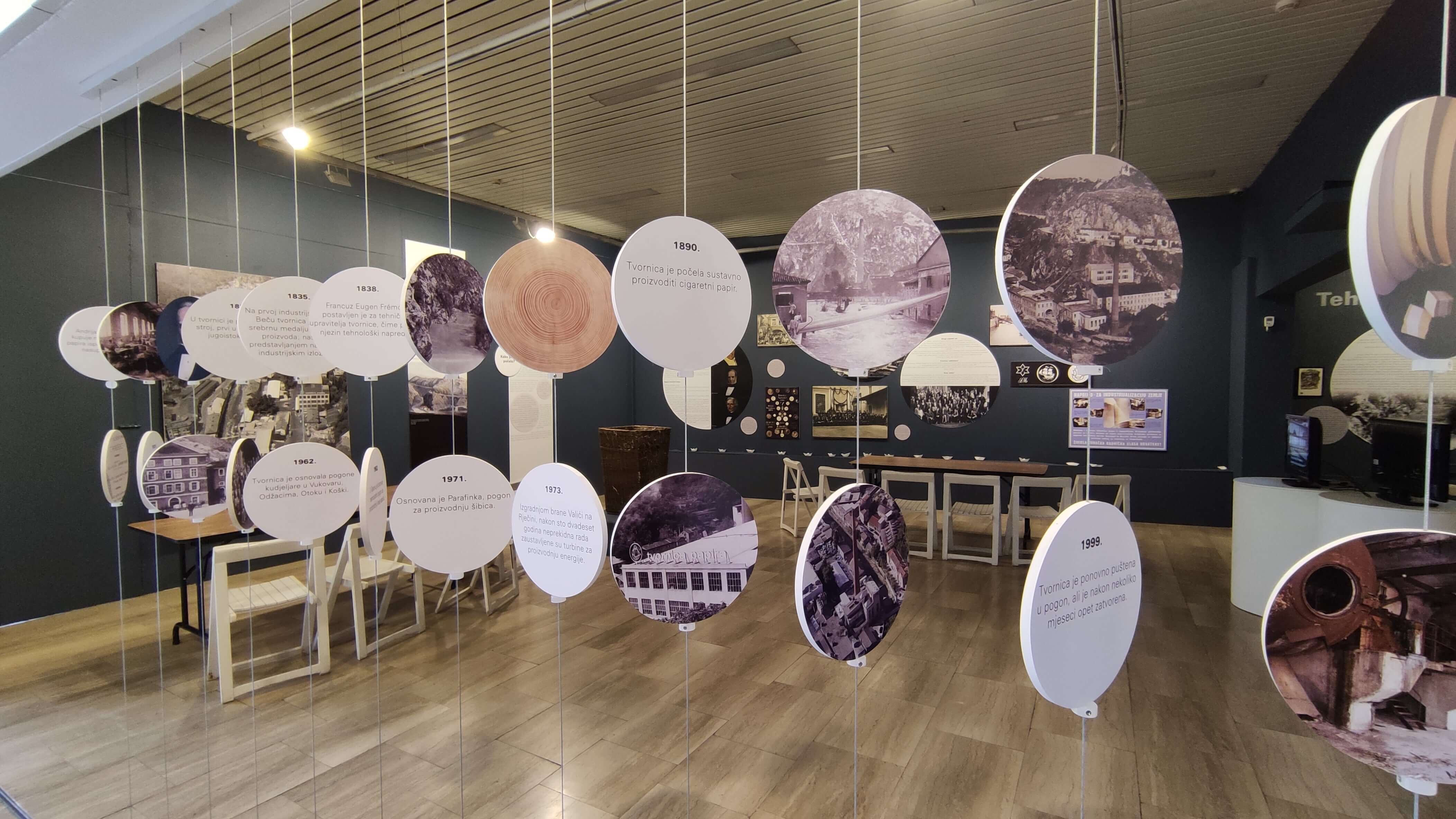
Exhibition Hartera bez harte at the City Museum of Rijeka
The story of Hartera begins with rags.
Humble rags once used to be highly coveted goods: paper was predominantly manufactured from cloth fibers until 1886 when cellulose replaced fabric as the main substance used in paper production.
Rag trade thus became quite a prolific commercial activity in these parts. Peddlers called cunjari visited small villages and went from door to door, collecting used linen and hemp cloth which they later resold to bigger buyers. Rags were in demand worldwide, and so tonnes of old cloth sourced in all parts of Croatia got exported to Trieste, London, Liverpool and New York via the harbour in Rijeka.
Andrija Ljudevit Adamich, a trader, industrialist and one of Rijeka’s best known historical figures saw an opportunity in the booming rag trade. He purchased a mill on the river Rječina in 1821, repurposing the existing facilities into a paper mill which soon employed 21 workers.
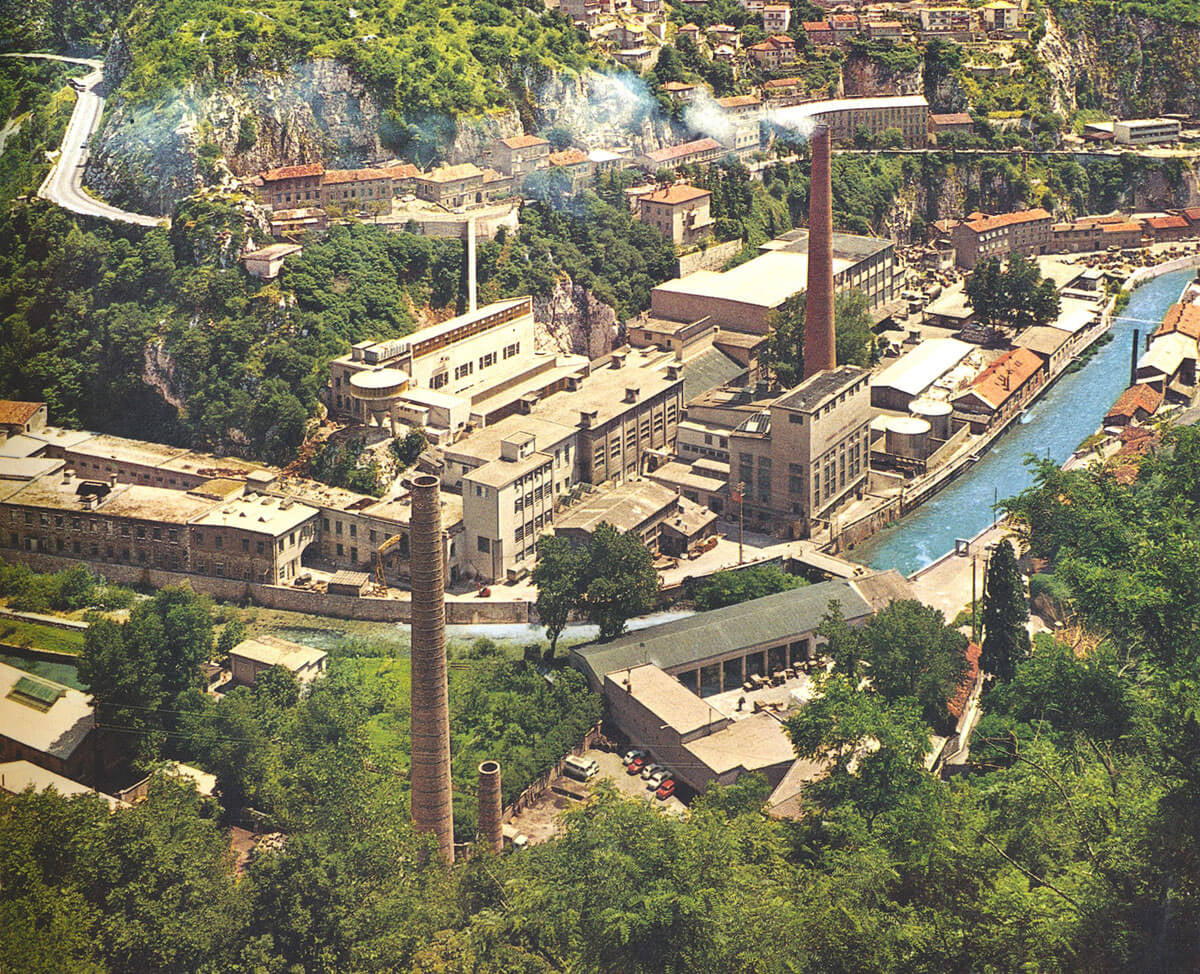
The Rijeka Paper Mill in the 20th century / Nova riječka enciklopedija - Fluminensia
The business turned out to be more of a headache than a success for Adamich. It was a time of general economic hardship, and manufacturing was made more difficult due to high production costs and procurement issues. A few years later the company was sold to foreign investors, namely Charles Meynier and Walter Crafton Smith who turned the struggling business into one of Rijeka’s industrial giants. They expanded and modernised the manufacturing plant and promptly installed a Foudrinier, the best paper making machine available at the time. Oh, and…
The first steam engine in the Balkans
Business picked up quickly after Meynier and Smith took over, and it wasn’t long until the factory employed 250 people to meet the production demand. As the output increased, manufacturing required more power, leading the owners to obtain a steam engine for the factory in 1833 - the first one in the Balkans.
It didn’t take long for Hartera paper to start amassing accolades at major industrial expos. It won a silver medal at the First industrial exhibition in Vienna in 1835, followed by awards won in Paris, Munich, London, Barcelona and Melbourne.
Interestingly enough, the company only launched its products domestically in 1878. For the first 50 or so years of operation, paper products made in Hartera were only sold on foreign markets: Italy, England, USA, Brasil, East India, and the eastern Mediterranean from Greece and Turkey to Jordan and Egypt.
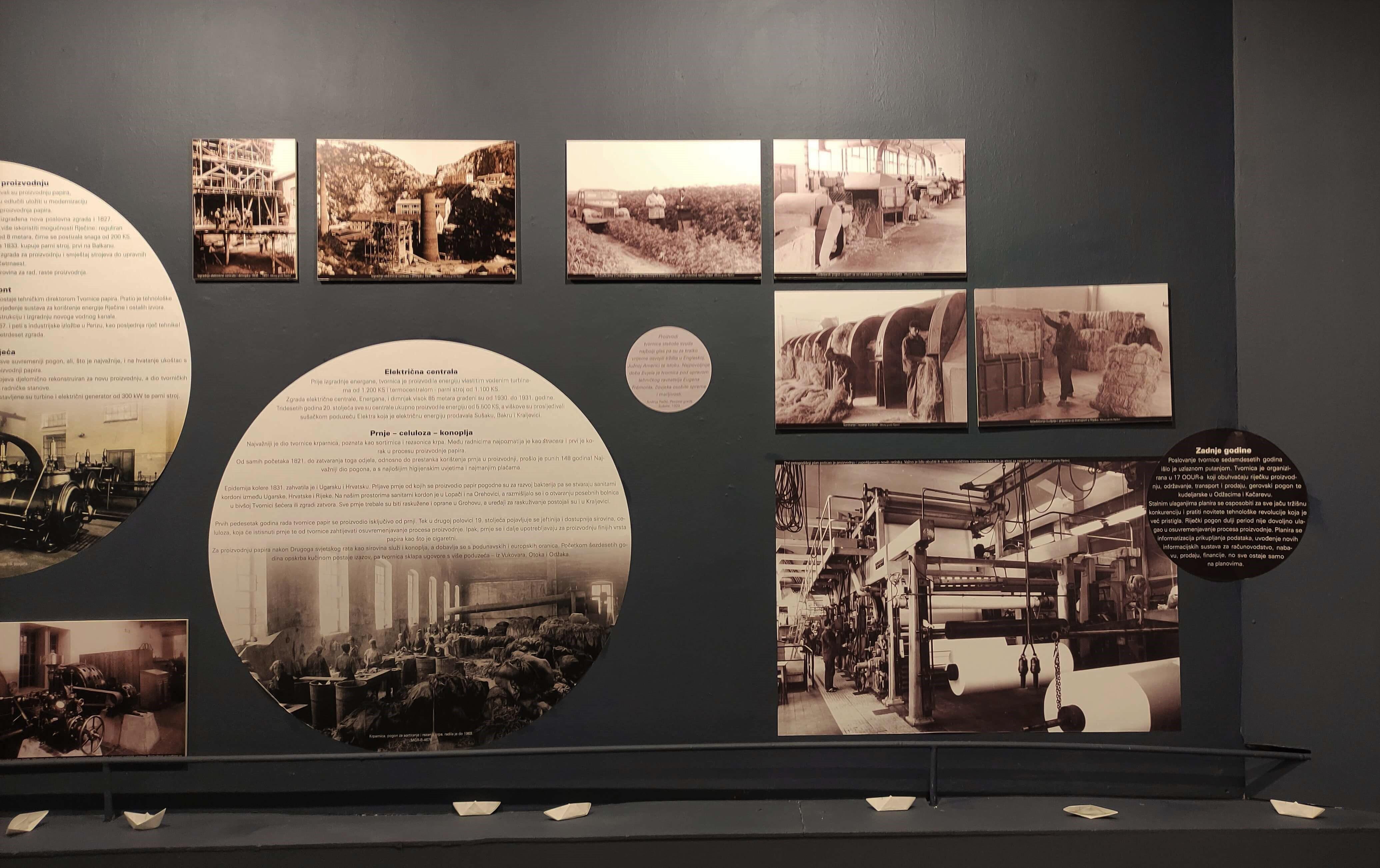
Poor working conditions
While the factory might have had the best manufacturing equipment money could buy at the time, and operated with such success that its workforce expanded significantly with each passing year, working conditions were far from ideal.
At the end of the 19th century, the company employed some 600 people; the factory operated around the clock, with everyone working 12 hour shifts with a single one hour break. No workwear or protective gear was provided to employees, leading to frequent injuries on the floor.
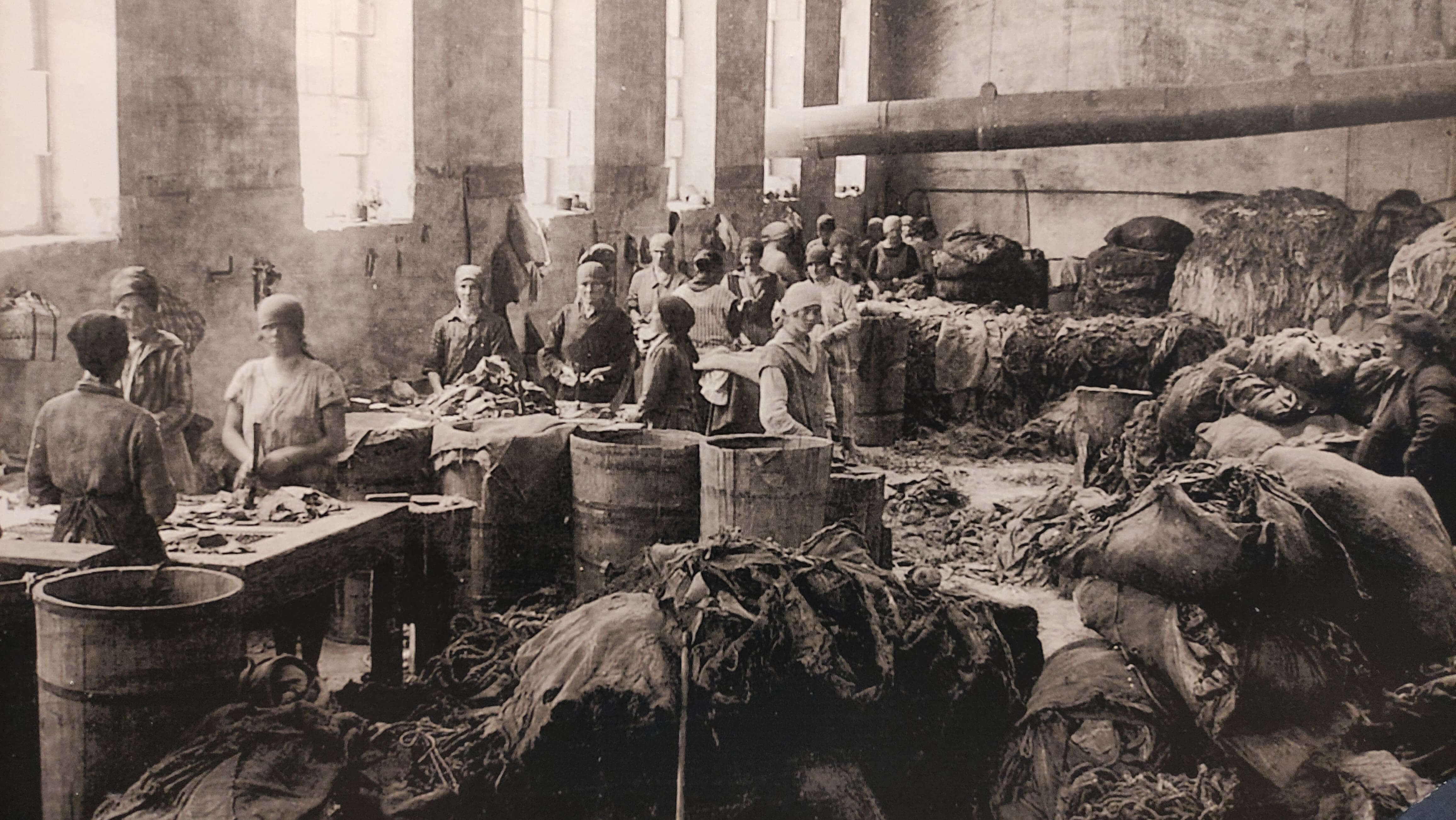
Workers at the rag sorting hall
Hygiene standards weren’t a thing either, the rag sorting facility being the worst offender in this regard. The workers had to sort through mounds of dirty used fabric riddled with bacteria (again, without any protective gear), leading to a slew of infectious diseases.
Considering that some diseases were not yet studied or had no known cure at the time, they were often referred to by alternate names. Anthrax was widely known as the woolsorter’s disease, or in Hartera’s case, cunjavica - the ragpicking disease. In the late 1880s, a particularly severe outbreak of anthrax resulted in the tragic death of 22 women workers.
On labour rights
Fed up with the poor working conditions, workers from several factories in Rijeka got together in 1906 and staged a mass strike. All 600 of Hartera’s workers joined the strike with a few demands: they called for shorter shifts, a day off on Sundays, and a 20% raise. Additionally, they asked for an employee board to be established, composed of eight workers who would serve as intermediaries between the company owners and the rest of the workforce.
The management responded by firing them all.
Things started to look up in the following few decades, though. Several syndicates negotiated with the management, leading to a collective agreement in 1938 which saw quite a few improvements to the working conditions at the paper mill. Employees were to work eight hour shifts, six days a week, and get paid every Saturday. Men earned 5 dinars per hour, whereas women got 4,5. After two years of employment, all workers earned a right to six vacation days a year. The company was also finally required to provide protective workwear and washing facilities with cold and hot water.
Why ‘Hartera’?
The Rijeka Paper Mill was officially named Tvornica papira (paper factory), but the enterprise has more often been referred to as Hartera to this day. Where does the nickname come from?
The Croatian word for paper is papir, but is called harta in the local dialect - which soon resulted in hartera, a logical name for a place where harta was made.
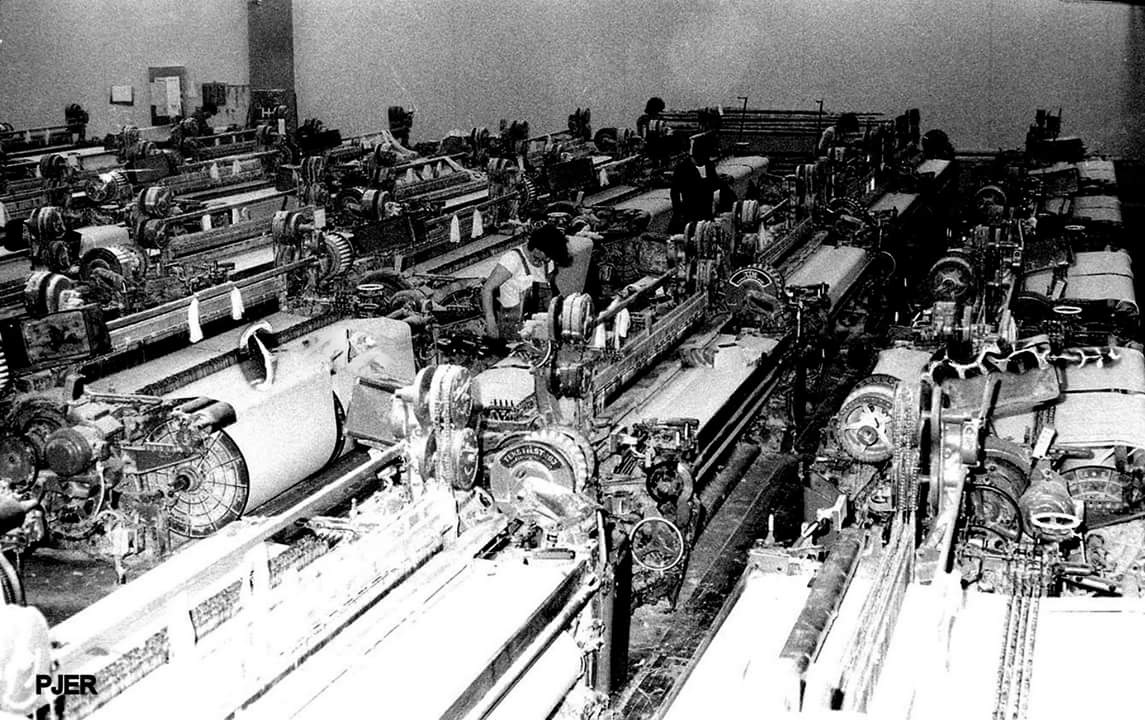
Pero Lovrović Pjer / Nova riječka enciklopedija - Fluminensia
Paper production
A wide range of products was manufactured in Hartera ever since the factory first started operating, mostly various types of writing and packaging paper.

Cigarette paper was first made at the factory towards the end of the 19th century, and over time became one of the company’s most popular products. Quality was of utmost importance, and the factory even procured a tobacco blend called harman to test the rolling paper on the particular blend it was made for.
In the 1980s, Hartera accounted for 7% of global cigarette paper production.
4 billion matches a year
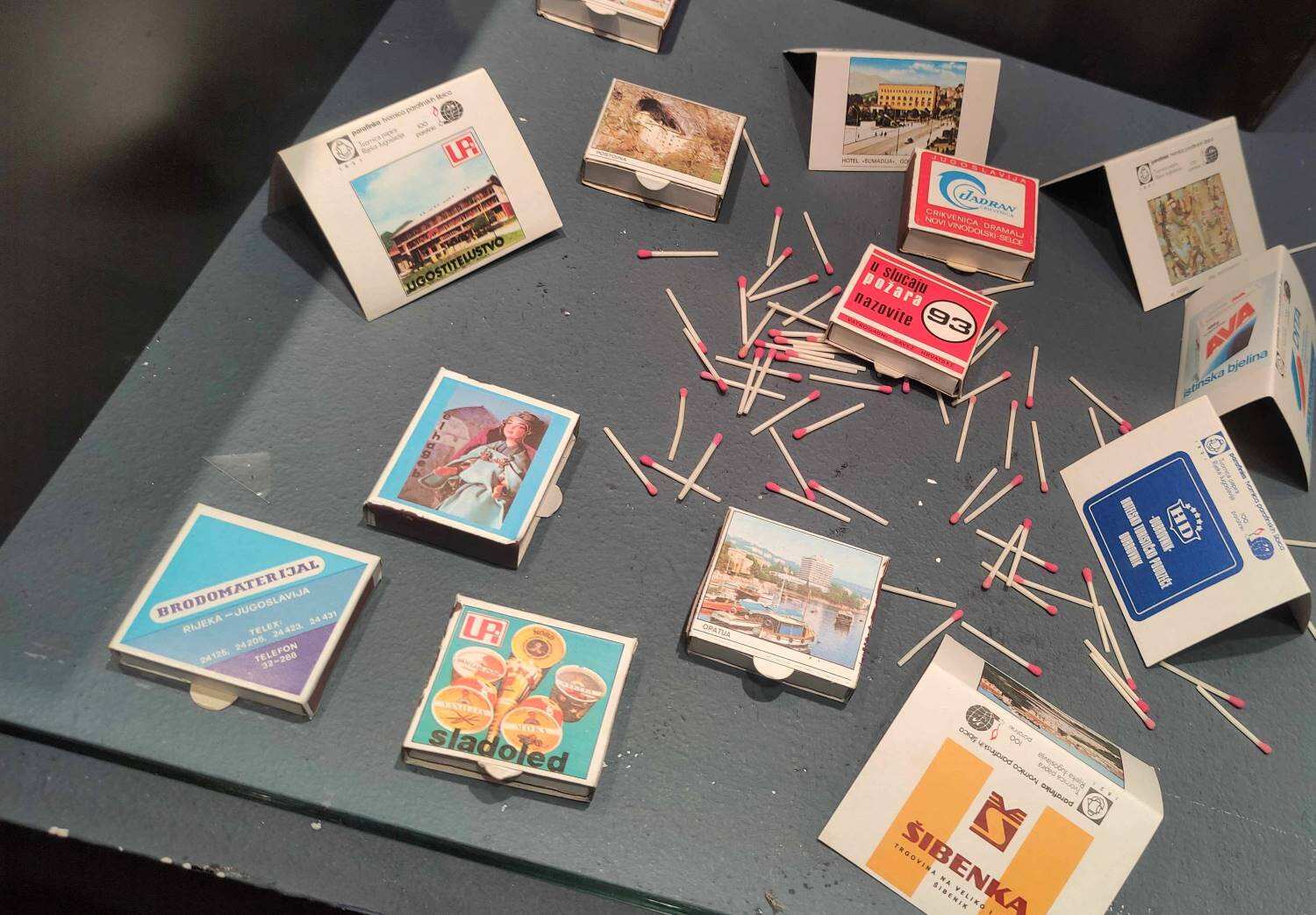
In 1971, one part of the Hartera plant was repurposed into a match factory named Parafinka. It was the only paraffin match factory in former Yugoslavia and became immensely successful within a decade: a report from 1981 shows that Parafinka produced around 48 million matchboxes that year, each box containing 80 matches. That’s close to 4 billion matches! If the figure is hard to grasp, let’s put it this way: if you were to arrange all those matches in a single line, it would circle the Earth three times.
Matches were made of Hartera’s thin, tightly rolled paper and then dipped in paraffin, resulting in a product which was thinner and shorter than wooden matches. The packaging was quite attractive, with colourful prints announcing major events and manifestations, advertising businesses, or promoting the region’s natural beauty and cultural heritage.
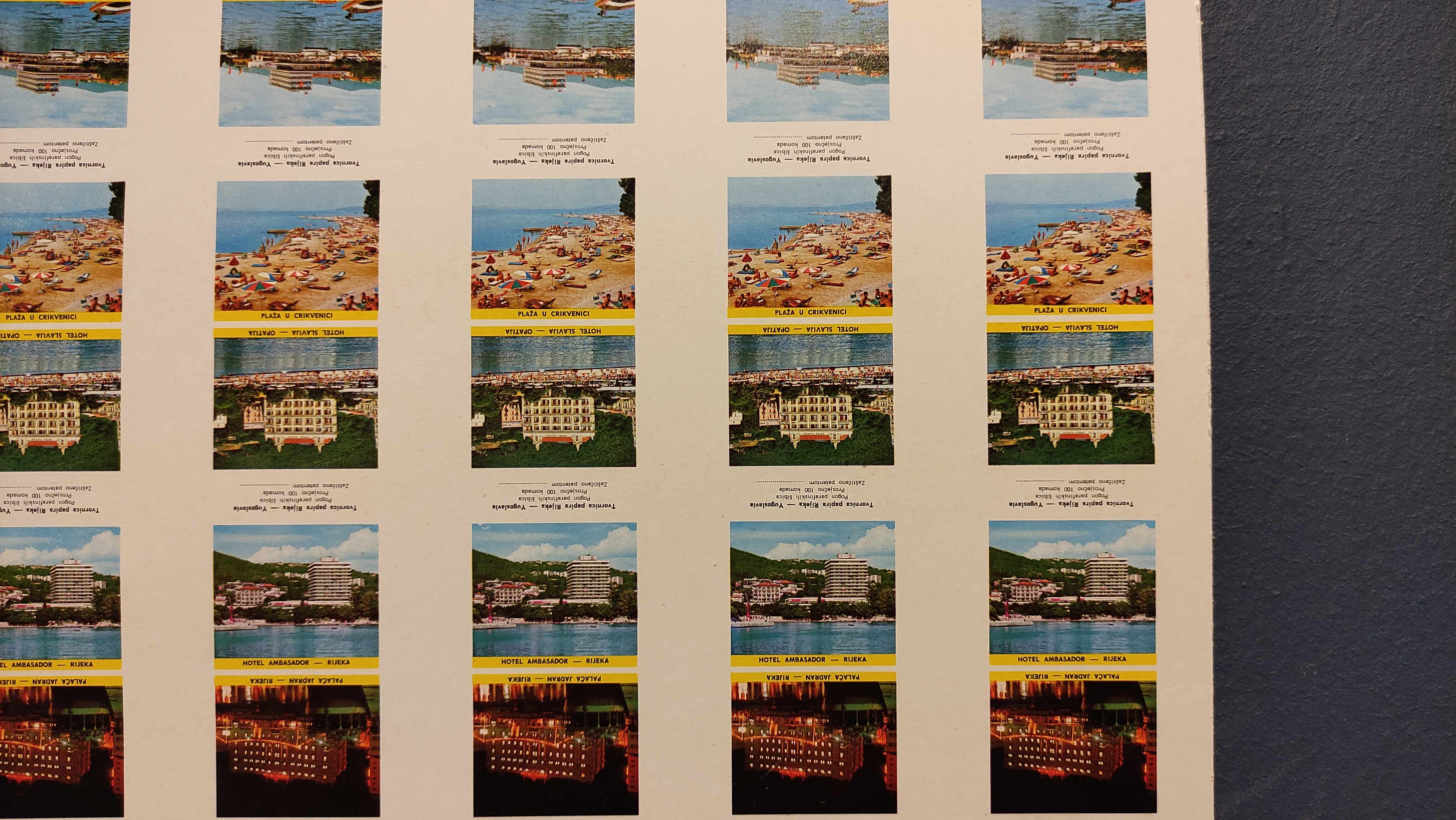
Parafinka matches were exported worldwide, including Libya, Egypt, USSR, Hong Kong, Austria, Switzerland, Belgium and the Netherlands.
Crises, disasters and the final blow
In almost two centuries of operation, the paper mill faced economic crises, wars, and a few natural disasters. The river Rječina was the main source of power for the factory, but also a destructive force. One severe flood damaged the plant in 1852, and the entire mill had to close down for several months after another disastrous flood in 1898. Flooding wasn’t the only threat: various parts of the plant burned down on four occasions at the turn of the 20th century.
Hartera survived all the hardships and - save for a few hiccups - continued to thrive until the war. In 1991, the company was at the height of its power: it employed over a thousand people and was the second biggest paper manufacturer in Europe.
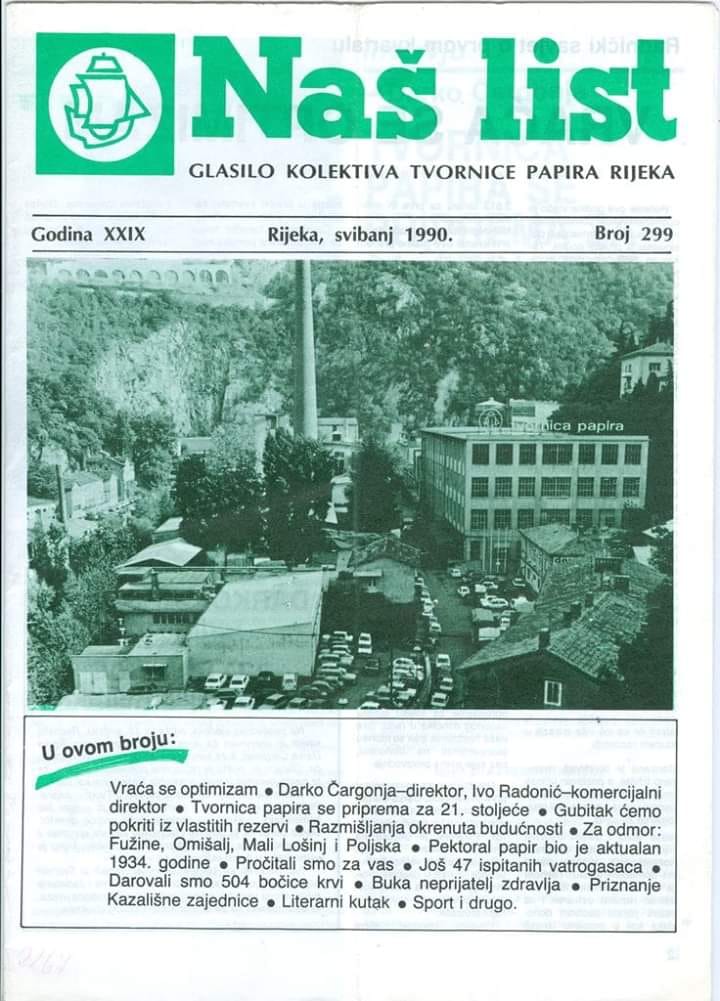
Rijeka Paper Mill bulletin from 1990 / Nova riječka enciklopedija - Fluminensia
Unfortunately, the war times and the economic turmoil that followed turned out to be the only hardship Hartera couldn’t survive. Substantial losses led to the factory closing down and the company declaring insolvency in 2005.
Uncertain future
After the paper mill ceased operating, the factory turned into a unique venue for a music festival. Named after the location, the Hartera Music Festival took place in the derelict factory halls until 2016, when the ruinous objects were declared unsafe and the festival moved to another location.
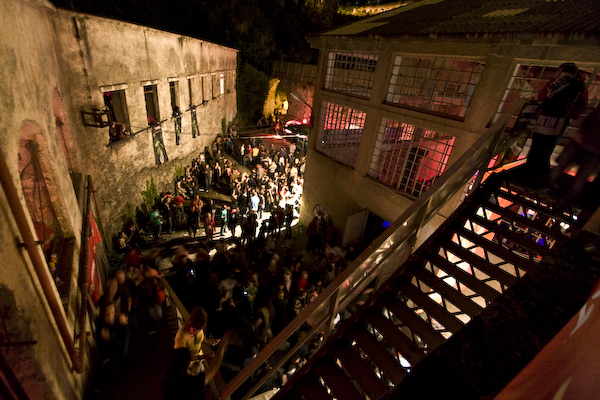
Hartera Music Festival in 2008. Source: Tim Ertl / Flickr
The Hartera festival was part of an initiative aiming to revitalize the area and preserve an important part of Rijeka’s industrial heritage. The City initially expressed interest, but the plans fell through due to lack of funding and a bureaucratic wall; the same happened a few years later after another initiative was devised to transform the Hartera complex into a socio-cultural centre which was supposed to breathe life - and business - into the largely abandoned area.
It remains to be seen if anything will come of the plans to revive the rundown factory. The outlook isn't hopeful, but one thing is certain: the Hartera paper factory and its workers are an integral piece of Rijeka's history and will always remain a part of the collective memory of its citizens.
The content of this article is largely based on the information displayed at the exhibition Hartera bez harte at the City Museum of Rijeka (author of the exhibition: Kristina Pandža). Unless noted otherwise, photos were taken by the author of the article.
London-Rijeka Flights Return Next Summer, Flydubai Dubai-Zagreb Flights Boosted
November 29, 2021 - The latest flight news as London-Rijeka flights are scheduled for next summer thanks to Ryanair, and FlyDubai boosts Dubai-Zagreb operations this winter.
Low-cost airline Ryanair is selling tickets between London and Rijeka for next summer, binging the Irish airline's second line to Rijeka next summer, reports Croatian Aviation. Recall, Ryanair also announced it would renew the Brussels and Rijeka line next summer.
Along with Brussels, Rijeka will again be connected to London by a regular line next summer. Traffic resumes on March 27, 2022. Two flights a week have been announced, every Thursday and Sunday, until late autumn - October 27, 2022.
On 62 return flights, Ryanair will offer 23,436 seats next summer between Rijeka and London. In addition, Rijeka will be connected to Stansted, an airport an hour bus ride away from central London.
In the meantime, Ryanair has announced ten more new lines to Zadar for next summer, and several more interesting lines to the Zemunik airport are expected soon.
Croatian Aviation also announced that Flydubai is increasing the number of weekly operations between Dubai and Zagreb in the second half of December.
After a long break, Flydubai returned to Zagreb Airport on September 23 this year. The airline has since operated between Zagreb and Dubai only twice a week. However, the airline will increase the number of weekly flights between the two cities in December.
From December 27, FlyDubai will increase the number of weekly operations between Dubai and Zagreb from the existing two to four flights per week. In addition to flights on Thursdays and Saturdays, Flydubai will additionally operate between the two cities on Mondays and Tuesdays.
Four flights a week are on offer until the end of May next year, and according to current announcements, Flydubai will operate on this route in the summer flight schedule. Emirates has permanently withdrawn from Zagreb Airport.
An increase in weekly flights had been planned earlier, but the company canceled certain departures.
The Zagreb flights are mainly operated by B737 MAX8 aircraft, which have a capacity of 166 passengers. As Flydubai and Emirates work closely together, Zagreb passengers can easily change flights via Dubai and continue their journey to several destinations.
For more on flights to Croatia and other travel announcements, make sure to check out our dedicated travel section.
HNL Round 17 Recap: Hajduk Tops Istra 4:0, Wins for Osijek, Rijeka, Dinamo
November 29, 2021 - The 17th round of the Croatian First League was held from November 26 to 28, 2021. This round saw Osijek, Rijeka, Dinamo, and Hajduk record victories, keeping the top of the standings tight. Here's our HNL round 17 recap.
Osijek v. Lokomotiva (2:1)
Osijek and Lokomotiva opened the 17th round on Friday, November 26, 2021, at City Garden Stadium in front of 1,083 fans.
Kulenovic put Lokomotiva in the lead with a goal in the 9th minute for 0:1, though Nejasmic equalized for 1:1 in the 40th. Lokomotiva's Ibrahim was booked for his second yellow in the 72nd minute, forcing them to play with a man down for the remainder of the match. Daku scored for Osijek to put them in the lead (2:1). Lokomotiva had another player sent off the pitch in the final minutes of stoppage time as Cojak was shown his second yellow. Fiolic scored in the 6th minute of added time for the final 3:1.
Osijek is currently in first place with 34 points (and one game less), while Lokomotiva is in 6th with 22.
Hajduk v. Istra 1961 (4:0)
Hajduk and Istra played the second Friday match on November 26, 2021, at Poljud in front of 4,560 fans.
Ljubicic scored Hajduk's first goal for 1:0 in the 11th minute. A Fossati rocket hit with the outside of his boot made it 2:0 in the 27th minute. Krovinovic increased Hajduk's lead to 3:0 in the 70th, and Livaja got his chance to score for the final 4:0 in the 2nd minute of stoppage time.
Hajduk is currently in 4th place with 30 points (and one game less), while Istra is in 8th with 15 (and one game less).
Hr. Dragovoljac v Gorica (0:1)
Dragovoljac and Gorica met in Zagreb on Saturday, November 27, 2021, in front of 105 fans.
The only goal of the match came in the 70th minute when Lovric scored for the Gorica win.
Dragovoljac is currently in the last place with 7 points, while Gorica is in 5th with 25.
Slaven Belupo v. Rijeka (1:2)
Slaven Belupo and Rijeka met in Koprivnica on Saturday, November 27, 2021, in front of 387 fans.
Belupo's Krstanovic scored an own goal for the Rijeka lead in the 51st minute. Drmic increased Rijeka's lead to 0:2 in the 70th. Caimacov gave Belupo some hope with a goal in the 74th minute for 1:2, but Hadzic missed a penalty and their chance to equalize in the 86th.
Belupo is currently in 9th place with 13 points, while Rijeka is in 2nd with 33 (and one game less).
Sibenik v. Dinamo (1:2)
Sibenik and Dinamo closed out the 17th round on Sunday, November 28, 2021, in Sibenik in front of 831 fans.
Ivanusec scored in the 19th minute for 0:1 Dinamo at the half. Jakolis equalized for Sibenik in the 75th minute, but a Peric own goal gave Dinamo the 1:2 win.
Sibenik is currently in 7th place with 18 points, while Dinamo is in 3rd with 31 (and two games less).
You can see the HNL standings HERE.
To read more about sport in Croatia, follow TCN’s dedicated page.
HNL Round 16 Recap: Hajduk Beats Rijeka at Rujevica, Dinamo-Osijek 1:1
November 22, 2021 - The 16th round of the Croatian First League was held from November 19 to 21, 2021. This round saw two of the biggest derbies in Croatian football, as Hajduk topped Rijeka at Rujevica and Dinamo and Osijek drew at Maksimir. Here is our HNL round 16 recap.
Hr. Dragovoljac v. Slaven Belupo (1:2)
Dragovoljac and Belupo opened the 16th round on Friday, November 19, 2021, in Zagreb.
Bosec opened the match for an early Belupo lead at 0:1 in the 3rd minute. Krstanovic increased their lead with a penalty in the 10th minute for 0:2. Majstorovic gave Dragovoljac some hope with a goal in the 73rd minute, but after a Lukic red card in the 87th minute, the match ended 1:2 for Belupo.
Dragovoljac is currently in the last place with 7 points, while Belupo is in 9th with 13.
Dinamo v. Osijek (1:1)
Dinamo and Osijek met on Saturday, November 20, 2021, at Maksimir Stadium.
Fiolic put Osijek ahead in the 16th minute for 0:1 at the half. Petkovic equalized in the 80th minute for 1:1, which was the final score.
Dinamo is currently in 3rd place with 28 points (and two games less), while Osijek is in 1st with 31 (and one game less).
Istra 1961 v. Sibenik (3:4)
Istra and Sibenik met in Pula on November 20, 2021.
Jakolis put Sibenik ahead in the 38th minute for 0:1, before Marin scored the equalizer 6 minutes later for 1:1 at the half. Beljo missed a penalty for Istra in the 59th minute, and Sibenik retook the lead thanks to Delic two minutes later (1:2). Delic scored again in the 72nd minute for 1:3, before Beljo redeemed himself and scored for 2:3 in the 82nd. Miskovic equalized 5 minutes later for 3:3, but it was Jakolis to score the winning goal for Sibenik in the 7th minute of stoppage time for the final 3:4.
Istra is in 8th place with 15 points (and one game less), while Sibenik is in 7th with 18.
Gorica v. Lokomotiva (2:2)
Gorica and Lokomotiva met in Velika Gorica on Sunday, November 21, 2021.
Fruk put Gorica ahead in the 2nd minute for 1:0. Prsir increased Gorica's lead to 2:0 in the 24th. Ibrahim gave Lokomotiva hope before halftime, scoring in the 34th minute for 1:2. Pivaric scored the equalizer for Lokomotiva in the 60th minute and the final 2:2.
Gorica is currently in 6th place with 22 points, while Lokomotiva is in 5th with 22.
Rijeka v. Hajduk (2:3)
Rijeka and Hajduk closed out the 16th round with the Adriatic Derby at Rujevica on Sunday, November 21, 2021.
After his first goal was called offside, Livaja scored just before the halftime whistle to put Hajduk ahead 0:1. Drmic equalized in the 53rd minute for 1:1. Rijeka was awarded a penalty in the 79th minute, which Muric scored for 2:1. Hajduk followed suit with a penalty five minutes later. Livaja was solid for 2:2. Hajduk had a corner in the match's final play, which found Mlakar's head for the 2:3 Hajduk win.
Rijeka is currently in 2nd place with 30 points (and one game less), while Hajduk is in 4th with 27 (and one game less).
You can see the full HNL table HERE.
To read more about sport in Croatia, follow TCN’s dedicated page.
Rijeka Winter Pass Allows Offseason Visitors Free Entry to Best City Attractions
November 19, 2021 - The Rijeka Winter Pass is given to all visitors who book accommodation in the city for more than two nights, allowing them to explore a number of the city's best attractions for free!
All visitors to Rijeka who stay in the city for two or more nights until March 31, 2022, have the opportunity to receive a Winter Pass, which allows them to visit the included attractions and facilities completely free of charge. Namely, it is a winter extension of the Rijeka Tourist Card, which will be available from April 1, 2022.
In addition to two major traditional events - Rijeka Advent and Rijeka Carnival, tourists can visit all museums, Art Quarter, Astronomical Center Rijeka, and Kantrida Pools for free.
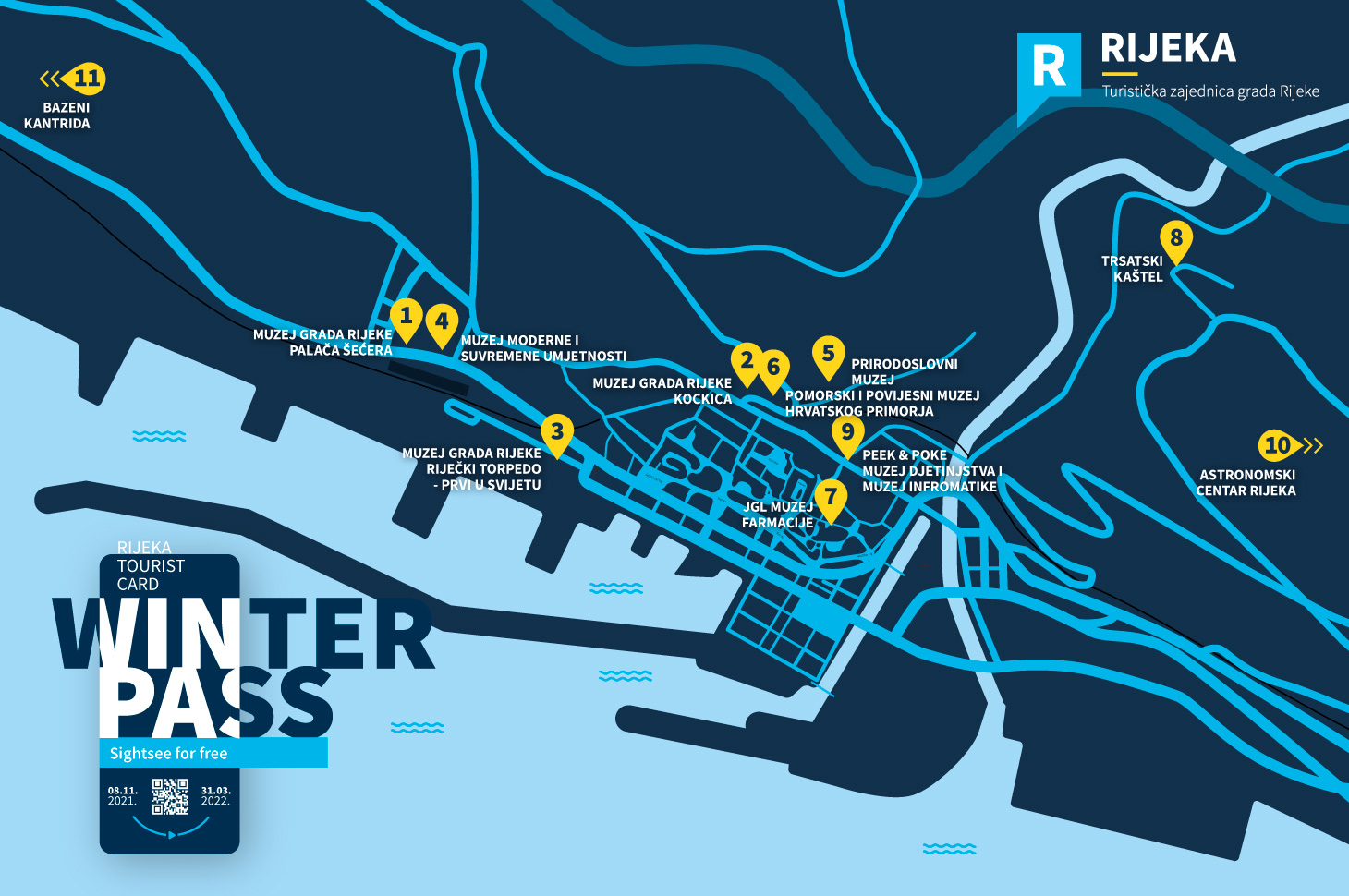
As for museums, visitors can visit the City of Rijeka Museum, i.e., its exhibits in the Palace of Šećerana, Kockica, and Žabica, where there is an exhibition on the Rijeka torpedo, MMSU, Natural History Museum Rijeka, Maritime and History Museum of the Croatian Littoral Rijeka, JGL Pharmacy Museum, Peek & Poke - Museum of Childhood and Museum of Informatics and Trsat Castle.
The Rijeka Winter Pass works in such a way that after booking accommodation for two or more nights in Rijeka, visitors will receive their Winter Pass upon arrival at the selected accommodation. The Winter Pass consists of a voucher with a QR code and will be sent to the visitor's e-mail. In addition, free entrance to selected sights is achieved by presenting a QR code at their entrance.
A Rijeka Winter Pass breakdown
- Book accommodation for two or more nights in Rijeka and receive a Winter Pass as a gift from the Rijeka Tourist Board.
- You will receive your Winter Pass upon your arrival at your chosen accommodation.
- Your Winter Pass consists of a voucher with a QR code. The voucher will be sent to your e-mail address.
- Show the QR code at the entrance of the selected landmark and get free entry.
In April, the Rijeka Tourist Card will take over from the Winter Pass, also providing the best discounts for the most important city attractions.
According to the Teaching Institute for Public Health PGC, all tourists can also receive rapid antigen testing for only 40 kuna, a practice that has been done since August 6, 2021.
Tourists can still be tested at the Teaching Institute in Opatija, Crikvenica, Krk, Cres, Mali Lošinj, Rab, and Delnice, and at the headquarters of the Teaching Institute in Rijeka (at the address: Krešimirova 52a, Rijeka).
Tourists who have a voucher or a certificate from eVisitor showing their overnight stay, proving that they have stayed in a commercial accommodation facility for at least 3 nights, have the right to use this testing discount. In addition, tourists can get a residence permit in the facility where they are staying (hotel, camp, household facility, etc.).
More information on the Winter Pass can be found here.
For more on travel in Croatia, follow TCN's dedicated page.
Harry Potter Around the World: 500 Copies Displayed in Rijeka
Following the exhibition in Zagreb, the impressive collection counting over 500 copies of international editions of the popular book saga is currently on display in Rijeka
How many editions of the Harry Potter series have you ever seen in one place? In an average bookstore, probably 2-3. In better bookstores, or possibly on shelves of avid fans, maybe a few more.
How about 500+ copies in over 60 languages?
You don’t often get an opportunity to see an entire room covered in bookshelves dedicated to a single piece of fiction. That’s exactly what I went to see today: an exhibition of 530 copies of the beloved series and a few related works, currently on display at the Tower Center mall in Rijeka.
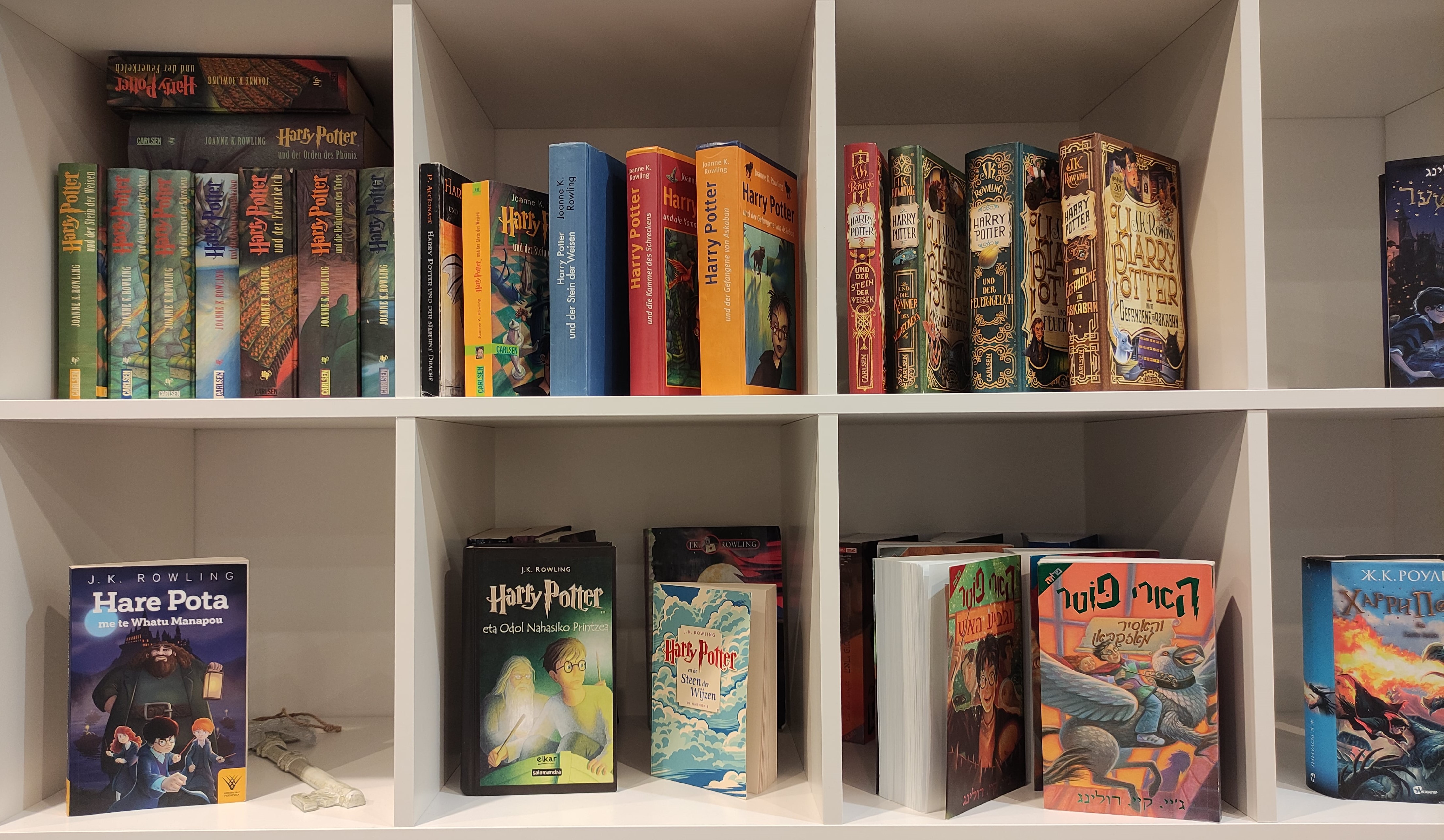
The incredible collection is owned by Damir Tonković who graciously made it available to the public, and counts editions in 68 languages acquired all over the world. From English and Croatian to Yiddish and Maori, the scope of the collection reflects the immense popularity and the universal appeal of the Potter saga to audiences spanning generations.
Many books on display, including the first Croatian edition, share the famous cover art created by Mary GrandPré:
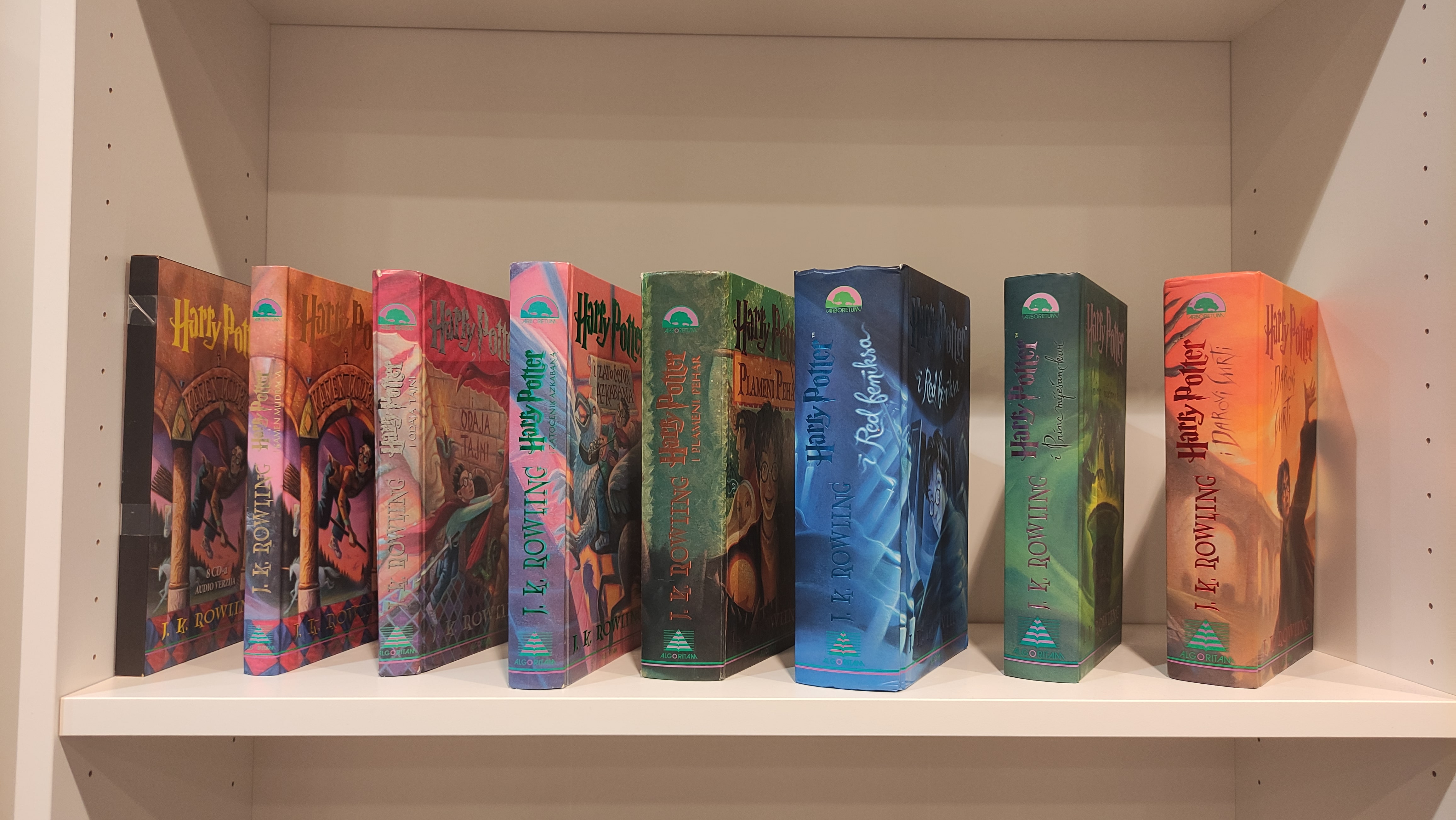
Fun fact: the first Croatian edition of the Harry Potter series (shown on the photo above) is somewhat of a rarity these days. Since the infamous crash of the publishing house Algoritam (2017) and the expiration of their exclusive publishing rights for HP in Croatia (2019), this particular edition has not been in print and is pretty hard to acquire, as owners willing to part with their copies are few and far between. Second-hand prices have soared over the last few years: each book in the series, which originally cost €20-25 on average, now easily sells for double or even triple the price. The first few books in the series are hardest to find and go for up to €100 apiece.
Back to the exhibition: I loved seeing different art styles on some of the international editions. The Thai one, for example, with its lavish cover art reminiscent of movie posters:

Unfortunately, I forgot to make a note of the country of origin of what might be my absolute favourite on display:
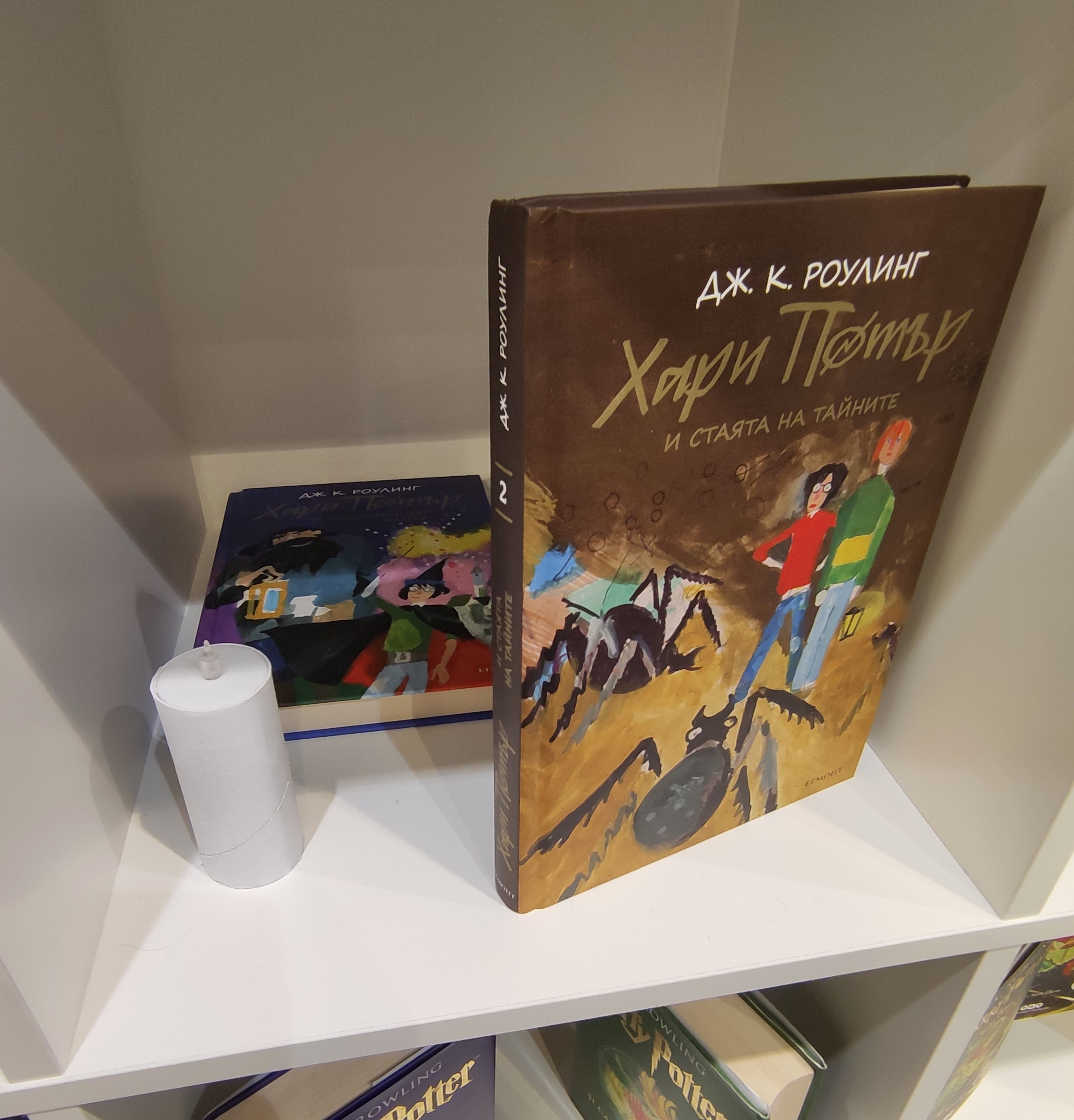
I also found it interesting to see different approaches to publishing. In Vietnam, each book in the series was published in several smaller parts. For example, The Order of the Phoenix was published as a serial of 22 instalments!
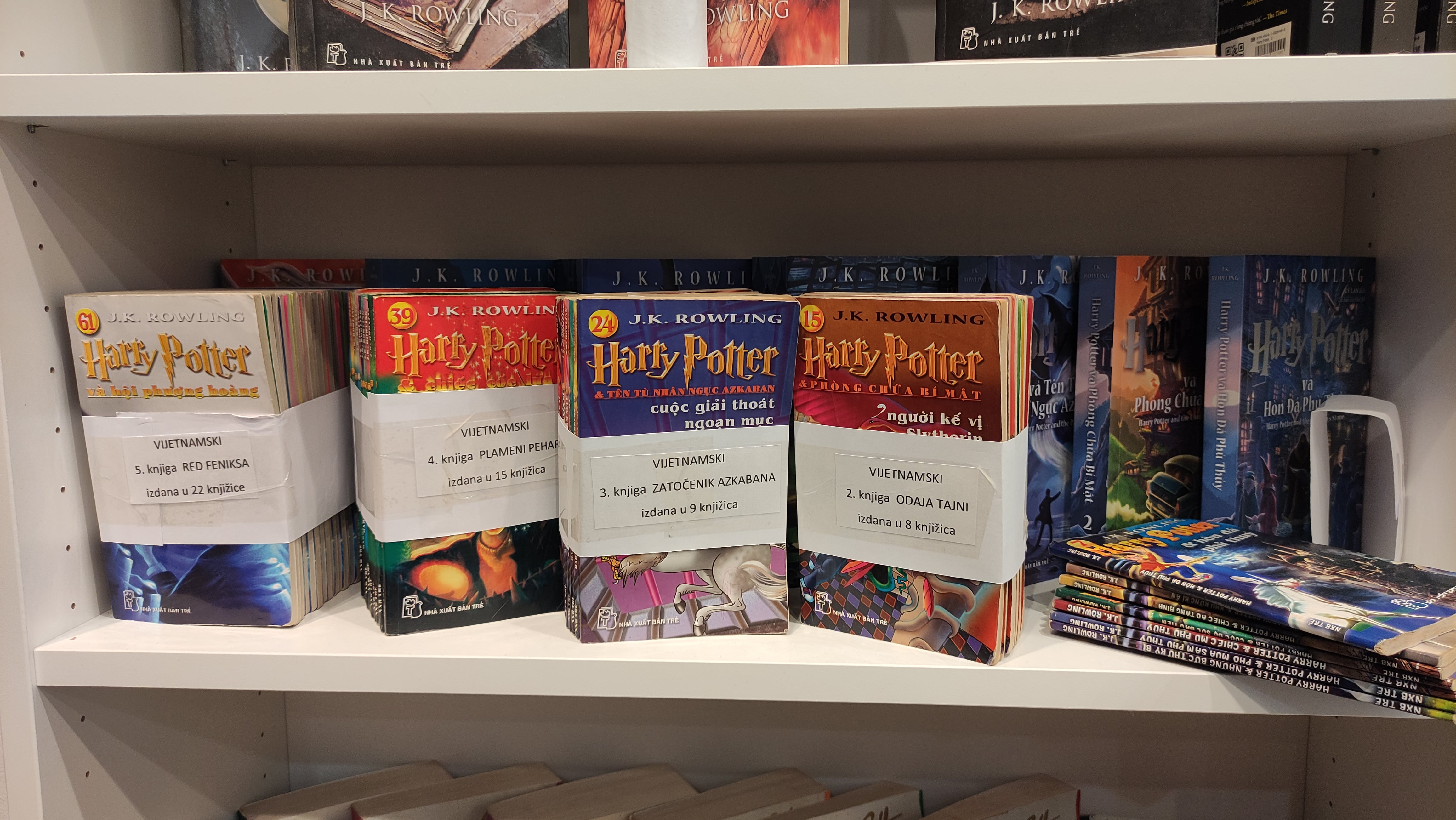
Visitors are allowed to leaf through all the books on display - quite a bold decision on behalf of the organizers, if you ask me, but I picked up a few nonetheless to check out the artwork in the illustrated editions.
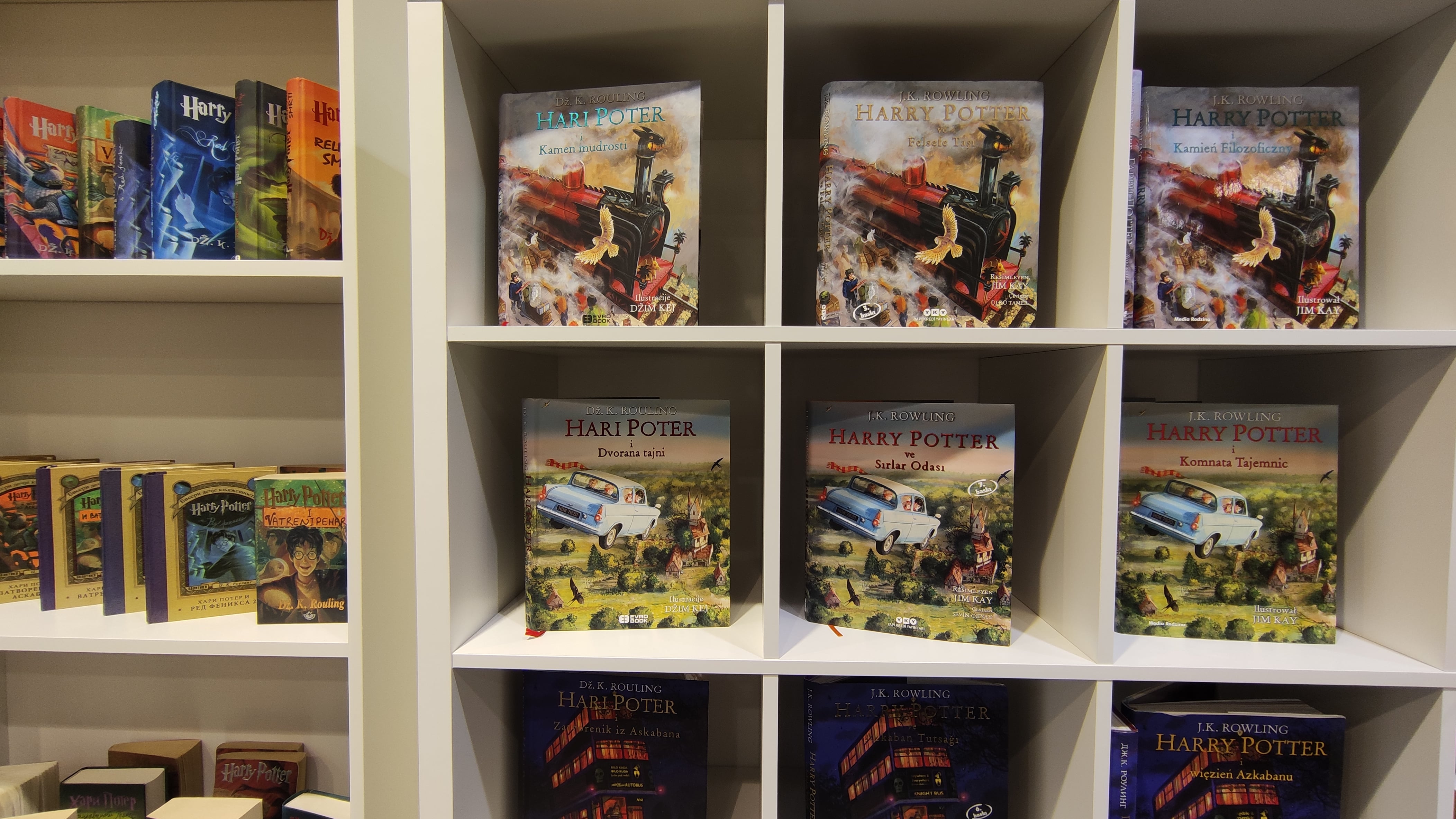
And as for the cover photo at the top? I barged in right after they opened today and was lucky to snap a pic of the empty room. It was otherwise much more crowded, especially on weekend mornings when the youngest visitors enjoyed some storytelling, and the Ministry of Magic held creative workshops for kids aged 7-14. It's no surprise that all the workshops and storytelling hours were fully booked days in advance.
The collection will remain on display at the Tower Center mall in Rijeka (3rd floor) until this Sunday, November 14th. It can be visited free of charge, every day from 5PM to 9PM, or from 11AM to 9PM on Saturday and Sunday.
The exhibition in Rijeka was organised by Hoću knjigu in collaboration with the Tower Center. It was first displayed in Zagreb earlier this year, and will make its way to other cities in Croatia as well (to be announced).


